#józef poniatowski’s friends
Explore tagged Tumblr posts
Text
Tag Yourself: Unabridged Shitty Drawing Marshal of the Empire Edition
Yes All 26 Of Them + Bonus 2
drawn and compiled by yours truly, initial and probably inaccurate research assisted by Chet Jean-Paul Tee, additional research from Napoleon and his Marshals by A G MacDonnell, Swords Around A Throne by John R Elting and a bunch of other books and Wikipedia pages
captions under images



mike (Michel Ney)
- full of every emotion
- always has ur back
joe (Joachim Murat)
- it's called fashion sweetheart
- will not stop flirting
lens (Jean Lannes)
- bestie who will call u out on ur shit
- does not like their photo taken
bessie (Jean-Baptiste Bessieres)
- actually nice under the ice
- was born in the wrong generation
dave (Louis-Nicolas Davout)
- overachiever
- 20 year old boomer
salt (Jean-de-Dieu Soult)
- people think ur up to no good
- doesn’t cope with sudden changes 2 plans
andrew (Andre Massena)
- actually up to no good
- sleepy until special interest is activated
bertie (Louis-Alexandre Berthier)
- carries the group project
- voted most likely to make a stalker shrine
auggie (Pierre Augereau)
- shady past full of batshit stories
- will not stop swearing in the christian minecraft server
lefrank (François Joseph Lefebvre)
- dad friend
- in my day we walked to school uphill both ways
big mac (Étienne Macdonald)
- brutally honest
- won't let you borrow their charger even if they have 100%
gill (Guillaume Brune)
- love-hate relationship with group chats
- pretends not to care, checks social media every 2 minutes
ouchie (Nicholas Oudinot)
- needs to buy bandages in bulk
- a little aggro
pony (Józef Antoni Poniatowski)
- can't swim
- tries 2 hard to fit in, everyone secretly loves them anyway
grumpy (Emmanuel de Grouchy)
- can't find them when u need them
- complains about the music, never suggests alternatives
bernie (Jean-Baptiste Bernadotte)
- always talks about their other friendship group
- most successful, nobody knows how
monty (Auguste de Marmont)
- does not save u a seat
- causes drama and then lurks in the background
monch (Bon-Adrien Jeannot de Moncey)
- last to leave the party
- dependable
morty (Édouard Mortier)
- everyone looks up 2 them literally and figuratively
- golden retriever friend
jordan (Jean-Baptiste Jourdan)
- volunteers other people for things
- has 20+ alarms but still oversleeps
kelly (François Christophe de Kellermann)
- old as balls but still got it
- waiting in the wings
gov (Laurent de Gouvion Saint-Cyr)
- infuriatingly modest about their art skills
- thinks too much before they speak
perry (Catherine-Dominique de Pérignon)
- low-key rich, only buys things on sale
- “let’s order pizza” solution to everything
sachet (Louis-Gabriel Suchet)
- dependable friend who always brings snacks
- lowkey keeps the group together
cereal (Jean-Mathieu-Philibert Sérurier)
- unnervingly methodical and precise about fun
- will delete your social media after u die
vic (Claude Victor-Perrin)
- loves spicy food but can’t handle it
- says they're fine, not actually fine
Bonus!
june (Jean Andoche Junot)
- chaotic disaster bisexual
- will kill a man 4 their bestie
the rock (Géraud Duroc)
- keeps a tidy house
- mom friend with snacks
#napoleon’s marshals#napoleonic era#napoleonic shitposting#napoleonic wars#history shitposting#cadmus draws#I thought it would be funny if it was hand drawn#i had to draw these over a few weeks or else my RSI ridden fingers would explode#I will reblog this a few times because this is so stupid and I’m proud of this#yes chatgpt helped because I’m not actually familiar with most of the 26#ended up editing a lot of it but some entries are less based on history and more based on vibes#and as we know vibes are extremely accurate
172 notes
·
View notes
Text
Friends, enemies, comrades, Jacobins, Monarchist, Bonapartists, gather round. We have an important announcement:
The continent is beset with war. A tenacious general from Corsica has ignited conflict from Madrid to Moscow and made ancient dynasties tremble. Depending on your particular political leanings, this is either the triumph of a great man out of the chaos of The Terror, a betrayal of the values of the French Revolution, or the rule of the greatest upstart tyrant since Caesar.
But, our grand tournament is here to ask the most important question: Now that the flower of European nobility is arrayed on the battlefield in the sexiest uniforms that European history has yet produced (or indeed, may ever produce), who is the most fuckable?
The bracket is here: full bracket and just quadrant I
Want to nominate someone from the Western Hemisphere who was involved in the ever so sexy dismantling of the Spanish empire? (or the Portuguese or French American colonies as well) You can do it here
The People have created this list of nominees:
France:
Jean Lannes
Josephine de Beauharnais
Thérésa Tallien
Jean-Andoche Junot
Joseph Fouché
Charles Maurice de Talleyrand
Joachim Murat
Michel Ney
Jean-Baptiste Bernadotte (Charles XIV of Sweden)
Louis-Francois Lejeune
Pierre Jacques Étienne Cambrinne
Napoleon I
Marshal Louis-Gabriel Suchet
Jacques de Trobriand
Jean de dieu soult.
François-Étienne-Christophe Kellermann
17.Louis Davout
Pauline Bonaparte, Duchess of Guastalla
Eugène de Beauharnais
Jean-Baptiste Bessières
Antoine-Jean Gros
Jérôme Bonaparte
Andrea Masséna
Antoine Charles Louis de Lasalle
Germaine de Staël
Thomas-Alexandre Dumas
René de Traviere (The Purple Mask)
Claude Victor Perrin
Laurent de Gouvion Saint-Cyr
François Joseph Lefebvre
Major Andre Cotard (Hornblower Series)
Edouard Mortier
Hippolyte Charles
Nicolas Charles Oudinot
Emmanuel de Grouchy
Pierre-Charles Villeneuve
Géraud Duroc
Georges Pontmercy (Les Mis)
Auguste Frédéric Louis Viesse de Marmont
Juliette Récamier
Bon-Adrien Jeannot de Moncey
Louis-Alexandre Berthier
Étienne Jacques-Joseph-Alexandre Macdonald
Jean-Mathieu-Philibert Sérurier
Catherine Dominique de Pérignon
Guillaume Marie-Anne Brune
Jean-Baptiste Jourdan
Charles-Pierre Augereau
Auguste François-Marie de Colbert-Chabanais
England:
Richard Sharpe (The Sharpe Series)
Tom Pullings (Master and Commander)
Arthur Wellesley, 1st Duke of Wellington
Jonathan Strange (Jonathan Strange & Mr. Norrell)
Captain Jack Aubrey (Aubrey/Maturin books)
Horatio Hornblower (the Hornblower Books)
William Laurence (The Temeraire Series)
Henry Paget, 1st Marquess of Anglesey
Beau Brummell
Emma, Lady Hamilton
Benjamin Bathurst
Horatio Nelson
Admiral Edward Pellew
Sir Philip Bowes Vere Broke
Sidney Smith
Percy Smythe, 6th Viscount Strangford
George IV
Capt. Anthony Trumbull (The Pride and the Passion)
Barbara Childe (An Infamous Army)
Doctor Maturin (Aubrey/Maturin books)
William Pitt the Younger
Robert Stewart, 2nd Marquess of Londonderry (Lord Castlereagh)
George Canning
Scotland:
Thomas Cochrane
Colquhoun Grant
Ireland:
Arthur O'Connor
Thomas Russell
Robert Emmet
Austria:
Klemens von Metternich
Friedrich Bianchi, Duke of Casalanza
Franz I/II
Archduke Karl
Marie Louise
Franz Grillparzer
Wilhelmine von Biron
Poland:
Wincenty Krasiński
Józef Antoni Poniatowski
Józef Zajączek
Maria Walewska
Władysław Franciszek Jabłonowski
Adam Jerzy Czartoryski
Antoni Amilkar Kosiński
Zofia Czartoryska-Zamoyska
Stanislaw Kurcyusz
Russia:
Alexander I Pavlovich
Alexander Andreevich Durov
Prince Andrei (War and Peace)
Pyotr Bagration
Mikhail Miloradovich
Levin August von Bennigsen
Pavel Stroganov
Empress Elizabeth Alexeievna
Karl Wilhelm von Toll
Dmitri Kuruta
Alexander Alexeevich Tuchkov
Barclay de Tolly
Fyodor Grigorevich Gogel
Ekaterina Pavlovna Bagration
Ippolit Kuragin (War and Peace)
Prussia:
Louise von Mecklenburg-Strelitz
Gebard von Blücher
Carl von Clausewitz
Frederick William III
Gerhard von Scharnhorst
Louis Ferdinand of Prussia
Friederike of Mecklenburg-Strelitz
Alexander von Humboldt
Dorothea von Biron
The Netherlands:
Ida St Elme
Wiliam, Prince of Orange
The Papal States:
Pius VII
Portugal:
João Severiano Maciel da Costa
Spain:
Juan Martín Díez
José de Palafox
Inês Bilbatua (Goya's Ghosts)
Haiti:
Alexandre Pétion
Sardinia:
Vittorio Emanuele I
Lombardy:
Alessandro Manzoni
Denmark:
Frederik VI
Sweden:
Gustav IV Adolph
57 notes
·
View notes
Text
Napoleonic era fiction
Having shared with you the history books about the Napoleonic era I've read recently, let me talk a little bit on the topic of historical fiction. (Not that I read this kind of book much, but there are some I'd like to express my opinion of.)
The first one in my list will be La Victoire de la Grande Armée, by the former French President Valéry Giscard d'Estaing. It's an alternative history book, where it is imagined what might have happened if in 1812 the Grand Armée had left Russia just after the battle of Moscow. (A spoiler - as one can guess from the title, everything should have went well for the Napoleonic France).
Alas, there are a lot of discrepancies in the book (like, for example, Poniatowski and Grouchy are marshals already in 1812); in additional, the protagonist (a general named François Beille) seems to be a kind of Marty Stu. Nevertheless, I liked this book, because... in that reality prince Józef didn't die in the battle of Leipzig (because the battle just didn't take place)! On the contrary, he's being made the king of the the restore Poland (though, I must admit, Poniatowski in fact didn't long for a crown - more on the topic here).
2. Having touched the topic of alternative history I can't help omitting another book (which, unfortunately, hasn't AFAIK been translated to any foreign language that's why I can now recommend it to my Polish speaking friends only). The book's title is Most we mgle (A Bridge In A Fog) and it is written by Marcin Ciszewski.
The plot is that in 1930ies Poland there appeared a time hole leading to 1813, using which a squad of the Polish soldiers was able to go back in time and change the result of the battle of Leipzig. So, in that universe prince Józef didn't die either )) (Though even there he had to become a king ;))
3. From alternative history of Poland let's switch to the real one, and here I have to digress a little to introduce you the next set of book. A friend of mine had once recommended me The Polish trilogy, a series of book by an American writer James Conroyd Martin, mentioning that in one of the books prince Józef's death in the battle of Leipzig is described. (A spoiler - there was such a scene in the second book, but it was not the most detailed description of the event I've stumbled upon, given all the books on the topic I've read, though it may be the only of those written in English.)
Having started to read the first book, I soon discovered that it wasn't an entire fiction, but was based on a real diary of a woman, Anna Maria Berezowska-Stelnicka, who lived in Poland in the end of the XVIIIth century. The diary was inherited by her descendants who live now in the US, and it was also translated to English and published and this is a book I do recommend to read:
4. And what about the book series? Alas, here I can't be so enthusiastic.
First, it contained a lot of typos (in Polish names etc.; it might have been fixed in the Polish edition, but I was able to find the English one so I read it) and even some historical (for instance, women working as civil-cervants' secretaries of Russian administration in Warsaw in 1830-ies) and geographical discrepancies (for example, according to the author to the East of Warsaw there are stepps which go all the way to Moscow).
In addition, I didn't like how Martin adjusted the real characters from the diary on which he based the first book of his. Also, it surprised me that John Stelnicki, Anna's descendant who is the current owner of her diary, chose a male writer to process the diary into a fiction story (in my opinion, in the book there were scenes where the female protagonist would act illogical and unfeminine and those were the scenes not present in the original diary).
And the second and the third books aren't at all based on the diary events - the action of both diary and the first book, Push not the River, ends in 1794. The second one, Against a Crimson Sky, is set in the span from 1794 to 1814, the last one, The Warsaw Conspiracy, is dedicated the Polish November Uprising which started in 1830 and lasted till October of the next year.
The second book I liked more (and it was there where prince Józef's death was described), but unfortunately, the discrepancies between the characters behavior and how real people of that time did think and act (if to compare with the real diaries and memoires of other real people) only enhanced. (Though it was kind of fun to recognize whose memoires the author was using to describe this or those event).
The last book... well, the November Uprising isn't really my cup of tea, so there were less things there that did catch my eye (but nevertheless, as I've mentioned above, they were). And I was really disappointed that in the epilogue of the book there was nothing about how Anna's family got to America. For because of the Uprising they had to leave Poland everything pointed out that they or there descendants wouldn't have return to the motherland until Poland gained independence in 1918... That's why, taking into account that Anna's descendant who is the owner of her diary does live in the US, it seemed to me it was worth to mention that the family moved to the New World (even if the real chain of events due to which the diary ended in the US couldn't be restored).
5. And the last image is to illustrate more of a question than a recommendation. For the sake of inspiration I decided to look for historical romances where the story is set in Napoleonic France. But, to my great disappointment, it turned out that there are not very much of them. The French Wikipedia in fact mentioned the only one series of books - Juliette Benzoni's Marianne, the set which I read, and even more than once. But those books, in my opinion, though may arouse interest in a person of fourteen, but can't IMHO inspire people in their forties (at least due to the fact that the main love interest of the heroine is a cynical abuser).
That's why I would like to ask you, my friends, for a recommendation of historical romance with the action set in Napoleonic France or its satellites (and where the protagonists are, of course, on the French side ;))
#Valéry Giscard d'Estaing#1812#napoleon#La Victoire de la Grande Armée#Józef Poniatowski#napoleonic era#napoleonic era fiction#Most we mgle#Marcin Ciszewski#alternative history#Anna Maria Berezowska-Stelnicka#James Conroyd Martin#The Polish trilogy#historical romance
10 notes
·
View notes
Text
The military salute
So I was having dinner with a dear American friend who I have mentioned before in a previous post on the British evacuation of Dunkirk I think. He was Exeter and Harvard educated before a stint in the US Marines Corps and now living and working in Paris. As always we get into interesting diversionary conversations about our comparative military experience. Somehow the issue of saluting came up.

He said that when he was growing up he was always told by family that showing the palm is a sign of subordination and submissiveness, and that only a military who has lost a war salutes with palm up. So he was surprised the first time when he received a salute from a passing British army soldier at some military event.
This is obviously untrue but it’s a mystery how that view persisted.
It’s true that both Britain and the US salute differently as do other nations. A soldier will never notice the way he salutes to a superior officer or on formal occasions (like raising the flag) until he/she were thrown in with other officers and soldiers of other allied countries to see the differences.
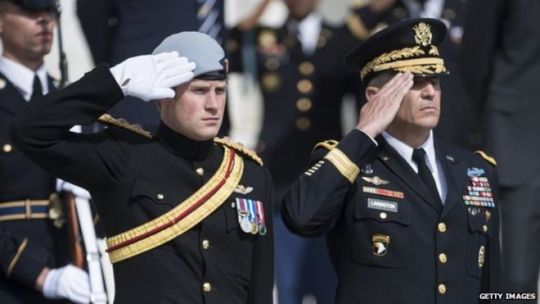
The origin of the military salute
As with many protocols, there’s a secret language to the salute and different expressions of the act of saluting. At the very basis of the salute is something worth pondering at a time when the public debate is trying to sort out what kind of accommodations ought to be made at citizenship ceremonies.
The salute is thought to have originated as a method of demonstrating benign intention. The story goes that public officials in ancient Rome required people approaching them for an audience to raise their right hand to show that they weren’t concealing a weapon. I would imagine it was a field day for left-handed assassins.

The truth is the origin of the military salute is uncertain.
A possible explanation has its origin in the Middle Ages,
Knights adopted a method of assuring other travellers that they meant them no harm. This assurance was transmitted by the raising of the visor on a helmet. Typically, the right hand would rise and lift the metal shield so that the face could be viewed. The right hand was used as it demonstrated that the weapon hand was engaged; the left hand was occupied holding the reins. In time, visors would be modified to have a small metal projection that could be easily lifted to effect this salutation.

This practice evolved to become what we know as the salute: Salute derives from both the Middle English and Old French meaning respectful greeting. You were, in essence, showing yourself.
The simple act of saying, “Hey, it’s just me; nothing to worry about here,” became the way that people in official capacities acknowledged one another. The military adopted salutes as a method of conveying respect and order. Each country found its own unique expression of this message.
However there is a drawback to having this explanation is that if the military salute had a medieval origin, it would have been used to a greater or lesser extent for centuries, but the reality is that it is a rather recent salute, which extended into the Contemporary Age.

Another explanation, more likely, points out that centuries ago there was a habit of saluting a superior by raising his hat. In the 18th Century the ordinances of the British Army suppressed the obligation to uncover the head to greet a superior. Instead, the custom of grabbing the end of the hat was established as if one were to remove the hat, a gesture that would have given rise to the military salute we know today.
Perhaps that explains a detail: as a general rule, in almost all armies, soldiers are exempt from military salutes if they do not wear any headgear. a British order book from 1745 dictates “men are ordered not to pull off their hats when they pass an officer, or to speak to them, but only to clap up their hands and bow as they pass.”

The two main types of military salutes
Currently, and with a few exceptions that I will point out below, in the world military salutes are divided into two main types: with the palm down and with the palm forward. The salute with the palm down consists of raising the arm leaving it at right angles to the body, then stretching the forearm toward the right temple, with the hand extended and the palm of the hand facing the ground.
This salute is the one used in the armed forces of the USA, Russia, China, Spain, Portugal, Italy, Germany, Austria, Belgium, the Netherlands, Ireland, Turkey and practically all the countries of Central and Eastern Europe and in all the countries of Central and South America, and also in the naval forces of the United Kingdom and the Commonwealth: Australia, Canada, New Zealand, India, Pakistan and others.
The other most usual military salute is with the palm in front. The procedure is the same as with the palm down, with the difference that in this case the palm of the hand is left facing the front and perpendicular to the ground. This military salute is used in France (where it is called “raquette”) and in many of its former colonies. The open palm salute is more identifiable in the public imagination (thank you Hollywood) with the armies and air forces of Britain and the Commonwealth countries including Australia, Canada, New Zealand, India, Pakistan and other ex-colonies.

The origin of the American armed forces
According to the Armed Forces History Museum, today’s standard salute - right hand touching the brim of the head cover with the palm down - was in place by 1820. The museum says the palm down portion of the salute may have been influenced by the salute style of the British Royal Navy at the time.
Why did the Americans follow the British Royal Navy? The US copied the British naval salute because they would more commonly encounter the British navy than the British army. So that's the one that got copied; thus the prevalence of palm down salute in the American military.
The origin of the different salutes in the British armed forces
Already stated above, in the United Kingdom and in the Commonwealth countries the two salutes are used: with the palm down in the case of the Royal Navy, and with the palm in front in the rest of the army and Royal Air Force.
What is this about?
There is an anecdote that could explain it: on one occasion Queen Victoria visited a warship and a sailor greeted her with his palm in front, his hand rather dirty. The Queen had then decreed that the crew salute with the palm down, because by the work of the ships, it was more frequent that the sailors had their dirty hands and it was bad to salute like that.

The Polish military salute with two fingers
One of the most peculiar military salutes is the Polish, known there as “salutowanie dwoma palcami”, that is, salute with two fingers. The name is because the salute is done as in other nations, but extending only the index finger and the middle, and bending the ring finger and little finger, closing them with the thumb.

The Polish salute has another peculiarity: the main purpose of the salute is to point out the white eagle, the national emblem of Poland, which is why Polish soldiers always wear the eagle in their headwear – with some exceptions – on the front in the center, even when wearing a beret. Currently, the Polish salute is done like French, that is, with the palm facing forward.
Perhaps the custom of saluting with the palm to the front extended in the Polish Army because many soldiers of that country ended up fighting framed first in the French Army and then in the British.
Incidentally, the Polish two-finger salute caused some complaints of British officers during the Second World War, as they considered it a lack of respect, as he thought that the Poles were giving them the Boy Scout salute (which is identical to the Polish, but extending three fingers instead of two). For this reason, the Polish soldiers in the British Army used to make the British salute with the palm in front, at least in the presence of British officers.
The origin of the Polish salute is as uncertain as the rest of the military salutes. The most common legend in Poland locates its origin in the Napoleonic Wars, when a military courier was hit by shrapnel, in spite of which he fulfilled his mission and when arriving before Prince Józef Poniatowski, he greeted him with the three remaining fingers of the hand, dying later. Poniatowski, admired by the bravery of the soldier, would have adopted the military salute for the Polish forces. However, other sources indicate that the salute did not appear until 1863 and would be of Russian origin, being adopted by Marshal Józef Piłsudski after the recovery of Polish independence in 1918, at which time the two-finger salute was made official.

The Albanian chopping salute
Known as the Zogist Salute. King Zog the First of Albania came up with a salute that is executed by placing your hand over your heart with your palm down with a sort of chopping motion.
The Zogist salute is big in Mexico and South America. Our RCMP salute in the manner of the British military, with the palm forward. In Germany, the reviled “heil Hitler” straight-arm salute can land you in jail for up to three years under their current criminal code. Rising from the fact that so many pilots were trained in the air force, airline ground crew tend to salute the pilots of outgoing flights.

Saluting tradition
There are so many ways of communicating via gestures enshrined in tradition: the handshake, the tip of the hat — all intended as acts of friendship. None of the salutes imply obeisance; each is designed to convey respect. In the British tradition, a salute isn’t for the individual but acknowledges the royal commission of the individual: it’s the job, and not the person, who’s being saluted. And the respect is always reciprocated with the salute being returned.
There’s more in a salute than you might think. Their initial impulse was to offset trepidation and inspire confidence; literally and figuratively, to disarm. The gesture went on to indicate respect everywhere from service people at arms and even the Boy Scouts. But the convention of showing oneself to defray concern and offer assurance is genuine and ancient and widespread. There is something in us that wants to see the hand and the face.
51 notes
·
View notes
Text
Royal Castle Warsaw – Top Attraction in Warsaw
The Royal Castle in Warsaw is a baroque-classicist residence, the former house of many Polish monarchs and kings. Nowadays it performs museum and representative functions. Originally it was the residence of the Dukes of Mazovia, and since the 16th century, it was the seat of the authorities of the First Polish Republic: the King and the Parliament.
In its long history, the Royal Castle was repeatedly plundered and devastated by Swedish, Brandenburg, German and Russian troops, during wars and occupations.
In 1980, the Royal Castle along with the Old Town were included in the UNESCO World Heritage list, and in 1994 together with the historical town complex, the Royal Route and Royal Wilanów, it was considered a historical monument.
The Collection
The collection at the Castle includes paintings, sculptures, drawings, graphics, furniture, ceramics, glassware, textiles, clocks, weapons, numismatic items and objects of archaeological value.
In the chapel of the Royal Castle in Warsaw, the royal insignia of Stanisław August Poniatowski are kept such as the Chain of the Order of the White Eagle and the ceremonial sword of the Order of St. Stanisław. In the chapel, there is also a casket with the heart of Tadeusz Kosciuszko.
The insignia of the President of the Republic of Poland are kept in the Royal Castle: stamps of the President of the Republic, Flag of the Republic and state documents. In 1994, Countess Karolina Lanckorońska donated 37 paintings to the Royal Castle. The collection contains two paintings (portraits) of Rembrandt: Scholars at the pulpit and Girl in the frame of the painting, both paintings were originally in the collection of Stanisław August Poniatowski. In December 2018, the violin, made by Antonio Stradivari, was deposited in the Castle deposit. This is the first such instrument in postwar Poland, it was created in 1685 and received the name Polonia.
The History
Setting of a wooden and ground castle in the 14th century on the Vistula embankment at the mouth of the Kamionka river was connected with the founding of the city of Warsaw. Both initiatives are attributed to the prince Bolesław II of Mazovia.
In the first half of the 14th century, the original castle-watchtower was transformed into the center of the Mazovian dukes.
In 1526, the last Mazovian noblemen died childlessly and the Czersk-Warsaw district was included in the Kingdom of Poland. King Zygmunt I came for the first time to Warsaw and took the oath of the Mazovian Parliament and took over the Castle.
In 1563, a decision about expanding the Castle was made, but the works started in 1569. By virtue of the resolution of the Union Parliament of Lublin, Warsaw and the Castle were recognized as a permanent place of meetings of the Seym of the Polish-Lithuanian Commonwealth.
The extension of the Castle, according to the design of the architect Giovanni Battista Quadro, slightly changed its external shape, much more interior.
Almost from the beginning of the reign of King Zygmunt III Waza Warsaw and the Castle, due to its convenient location, became the place of longer stays of the royal court.
After 1598, the pursuit of regaining the native crown became an important goal of Zygmunt’s policy. In such circumstances, he decided to move the mansion permanently to Warsaw and make an essential extension of the Castle.
The period of the Swedish Deluge and the three occupations of Warsaw by the Swedish and Transylvanian armies brought the castle plunder and devastation of interiors. The Swedes took not only a significant part of the artistic collections gathered in the Castle (including 200 paintings), but also permanent elements of interior design (marble floors, fireplaces) and garden architecture (sculptures, fountains). Parts were burned down and the Clock Tower was damaged.
However, the interior was substantially reconstructed relatively quickly so residential and public functions were restored to the Castle.
Castle’s greatness
During the reign of Stanisław August Poniatowski, the last Polish monarch, the Royal Castle had a period of its greatest splendor. The amounts deposited from the royal treasury and the private royal box were enormous. The king surrounded by patronage artists and craftsmen. All of the above, as well as political views and the artistic taste of the ruler, allowed the transformation of the “ancient seat of Polish kings” into a representative royal residence, taking into account the aesthetic and ideological concepts of the European Enlightenment.
The building of the Royal Library was built from scratch, using the area next to the east wing of the Castle. Inside, a royal collection was collected, which in 1795 had more than 16 thousand volumes.
In the 19th century, Emperor Napoleon Bonaparte visited the Castle. Here in 1807 he decided to create the Principality of Warsaw. Soon afterwards, in 1815, the Kingdom of Poland was established and the capital was moved from Cracow to Warsaw.
Wars and occupations
After the January Uprising, the Russian army completely destroyed the royal garden from the side of the Vistula, building several brick barracks. During the years 1915-1939, restoration works were carried out at the Castle.
In the interwar period, many outstanding conservators of art worked at the Castle, which made the Royal Castle in Warsaw one of the most important conservation centers in contemporary Poland. Since 1926, the Royal Castle served as the residence of the Polish president.
In September 1939, the Royal Castle burnt after German bombing. Plunder of art from the Castle began after the occupation of Warsaw by German troops. The final destruction of the building took place during the Warsaw Uprising.
In 1949, the Legislative Parliament unanimously passed a resolution to rebuild the Royal Castle. Until 1974, the castle was rebuilt in its raw basic shape. Interior furnishing (furniture, paintings, collections of works of art, etc.) and finishing works lasted until 1988.
in the 21st century, comprehensive repairs of various parts of the Castle were taking place to get the most out of its original appearance.
Royal Castle Sightseeing
There are several permanent expositions and seasonal/temporary exhibitions.
Permanent exhibitions:
● The Tin-Roofed Palace:
○ Prince Józef Poniatowski’s Apartment
○ Exhibition of eastern carpets from the Teresa Sahakian Foundation collection
● The Kubicki Arcades
● The Upper Garden
● The Lanckoroński Collection – Rembrandt’s Paintings. Gallery of Paintings, Sculpture and the Decorative Arts
● The Royal Castle – from Destruction to Reconstruction
● The Numismatic Cabinet
● Stefan Żeromski’s Apartment
You can choose the Royal Castle Route that includes:
● The Royal Castle – from Destruction to Reconstruction exhibition
● Rooms on the ground floor: The Lanckoroński Collection – Rembrandt’s Paintings. Gallery of Paintings, Sculpture and the Decorative Arts, The Royal Library
● Rooms on the first floor: The Great Apartment, The King’s Apartment, The Four Seasons’ Gallery, The Parliament Chambers, The Matejko Rooms
● Rooms on the second floor: The Numismatic Cabinet, Stefan Żeromski’s Apartment
Royal Castle Opening Hours
● Monday:
○ (1 September – 30 April): closed
○ (1 May – 31 August): 10:00-18:00
● Tuesday, Wednesday, Thursday, Saturday: 10:00-18:00
● Friday: 10:00-20:00
● Sunday: 11:00-18:00
Royal Castle Tickets The Royal Castle Route:
● normal ticket – 30 PLN
● reduced ticket – 20 PLN
● children up to 16 years old – 1 PLN
Guided tours:
● headsets required for a guided group – can be rented for 5 PLN per person
Audioguide:
● normal ticket – 17 PLN
● reduced ticket – 12 PLN
Language versions: Polish, English, German, Russian, French, Spanish, Italian
The Royal Castle – from Destruction to Reconstruction exhibition:
● FREE admission
The Numismatic Cabinet:
● normal ticket – 7 PLN
● reduced ticket – 5 PLN
● children up to 16 years old – 1 PLN
Stefan Żeromski’s Apartment:
● available during weekdays on request based on a ticket for the Royal Castle Route or a ticket to the Numismatic Cabinet
The Kubicki Arcades:
● FREE admission
The Tin-Roofed Palace:
● normal ticket – 15 PLN
● reduced ticket – 10 PLN
● children up to 16 years old – 1 PLN
The Upper Garden:
● FREE admission
IMPORTANT: Tickets can be bought on the spot at the ticket office or online. During the Summer season there might very long queues, sometimes waiting time reaches up to 2h. It is advised to buy tickets in advance during the high season.
Royal Castle Tours
If you don’t feel like organising everything on your own, our great guided tour to Royal Castle will be the perfect option for you!
It will give you unique chance to explore the Royal Castle and area around with local professional guide. All of our guides are licenced and official, and have huge knowledge but also a passion to what they do. You will learn everything you want about Castle’s history and hear interesting curiosities about this place that you wouldn’t find in any guidebook! Choosing our tour, you won’t have to wait in line at ticket office, skip the line entry is always guaranteed and included in price.
There are 2 options that you can choose from, and both of them can be arranged in private or shared version:
1. Royal Castle Guided Tour – 2 hours tour that includes sightseeing the Warsaw Royal Castle. You will have a proper introduction outside the Castle and chance to admire its beautiful architecture. Then you will see the Castle’s interior during the Royal Castle Route.
2. Royal Castle and Warsaw Old Town Guided Tour – 3 hours option that includes everything from shorter version and in addition you will be taken around the charming Warsaw Old Town. The Royal Castle is placed at the beginning of the Old Town, so you will have a chance to see the tiny streets with colorful buildings along them and learn this area’s rich history.
Private version is a great choice if you’re coming to Warsaw with a group of friends or family. Your private guide will be only at your group’s service and will answer all of your questions. We offer our tour in 7 different languages: Polish, English, German, French, Russian, Spanish and Italian. Private guided tours take place every day (except Monday and Wednesday) at 11:15am and 4:15pm.
If you’re traveling alone or in a very small group, then a shared group version of this tour will be the best for you. You will have a chance to meet new interesting people from all over the world with whom you will be sharing this tour. No worries about the crowds though, the group will be up to 15 people only. Group tour is held only in English and takes place every day (except Monday and Wednesday) at 11:15am.
1 note
·
View note
Text
Prince Poniatowski in Kraków, in spring 1813
Today let’s switch back o the topic of prince Józef’s last year. The Polish Army under his command entered Kraków in the end of February, 1813:

(all the drawing by the Polish painter Zbigniew Łoskot)
What was prince Józef doing then? Well, his main task as a commander was to rebuild the Army. New conscripts had been taken already in Warsaw, in Kraków there joined the locals, the Krakuses, on their ‘short’ horses. The maneuvers would take place on Błonia meadow west of the city, sometimes general Poniatowski would attend them.
Krakusi:

In addition to his military duties prince Poniatowski had to participated in the social life. The ministers of the Duchy had moved to Kraków together with the army; a lot of Varsovians, fearing the Russians, had evacuated from the capital as well.
Holidays, such as Easter, the Birthday of Napoleon’s son, the King Rome, prince Józef’s name day, were celebrated with great pomp.

And though the carnival was already over, people were in such a need of fun that dances would often take place.

Prince Józef had to participate in such activities as well, even if he wasn’t in a mood of having fun.
Because the citation was becoming more and more serious. The garrisons of some Polish fortress were capitulating; general Frimont, the commader of the Austrian corps, which theoretically was an allied one, would push general Poniatowski and his men to leave; Napoleon was rebuilding his army and didn’t hasten to come from France; and, in addition, Poniatowski’s friends and relatives were ‘defecting’ and persuading him to join them, to betray Napoleon and enter the service of the coalition.
One of those men was Konstanty Czartoryski, prince Józef’s second cousin (and the younger brother of prince Adam, a friend of the Russian tsar Alexander):

Another - prince Antoni Radziwiłł, married to a princess from the Hohenzollern dynasty, a first cousin one removed of the Prussian king.
(The meeting with Radziwiłł, however, turned out to be a very short one, because on arriving the latter was arrested by the order of the French ambassador in the Duchy, Edouard Bignon, and Poniatowski managed to free the unlucky visitor only on condition he would immediately leave Kraków)

But prince Józef didn’t give in.
The hardest moment happened in night from 6th to the 7th of May, on the eve of his 50th birthday. The emotional tension was so strong, that prince Józef was even thinking of committing suicide. Twice. (More on the topic I wrote here, in the post about Poniatowski’s relations with Napoleon).
But eventually he made a decision to stay with the Emperor of the French, what he announced next morning, revealing some details of his night thought, to another of his pals trying to persuade him, the count Aleksander Linowski:

And the next day the first divisions of the Polish Army started to move west, to join Napoleon in Germany.

#Poniatowski#józef poniatowski#1813#kraków#Zbigniew Łoskot#Konstanty Czartoryski#Antoni Radziwiłł#Aleksander Linowski#the duchy of warsaw#Napoleonic#Napoleonic Wars
24 notes
·
View notes
Text
A few bits of propaganda for Charles Maurice:
Even the most ruthless critics of T. cannot refuse the lame devil the credit for creating two things of monumental historical value: for Europe - the Congress of Vienna; for Culture – Eugene Delacroix. Long-term only Eugene proved to be a masterpiece.
Much was said in Europe about Talleyrand’s seraglio, a curious syndicate of withered lionesses, ageless stars, past mistresses – and lasting friends. Those ladies spied, intrigued, served, amused, fulfilled his wishes, gave him money, even, and not always according to their own interest. Countess Kielmannsegge, Viscountess de Laval-Montmorency, Duchesses Fitz-James, Vaudemont, de Luynes, Mme de Bauffremont and Józef Poniatowski’s sister, Countess Tyszkiewiczowa, Talleyrand’s faithful slave until death – those are but some of the names.
A curious detail: Talleyrand’s first and last conquest share the same name; Dorothée Dorinville (Luzy) and Dorothée Dino, a daughter of Duchess of Courland, also his lover, and the wife of his nephew and heir.
Talleyrand’s standard and usually wildly successful policy was to use women as tools in political games and various intrigues: “faire marcher les femmes”. A great number of women ‘marched’ for his career, including the person who won him the position of minister in Barras’ government: the one and only Germaine de Staël.
Among the many names given to Talleyrand before and after his death, “Angora cat” is perhaps the most curious one. Though perhaps not so surprising, considering how sweetly he could purr compliments! It is perhaps no less telling that his best friend for life and fellow ci-devant magnificently amoral sexyman, Casimir the Montrond, was affectionately dubbed by Talleyrand “Baby Jesus from hell”.
Talleyrand introduced Merino sheep to Valençay and, using their fine wool, created a renowned hosiery. The sexy part about this isn’t about the sheep though. Jean Orieux claims that the thing which most impressed Duc d’Orleans during his visit to Valençay was the massive collection of bare feminine legs cast in plaster. Apparently, as was explained to him by the gracious host, those legs belonged to Talleyrand’s many old friends-and-mistresses, for whom the hosiery made custom stockings as a lasting sign of his friendship and courtesy.


Friederike of Mecklenburg-Strelitz
[no propaganda submitted]
But the admin is adding this painting of her with her sister Louis anyway because it's cute:

Charles Maurice de Talleyrand
Propaganda:
“Much like Metternich, he was considered a sexyman in his lifetime too.”
44 notes
·
View notes
Note
Apart from Marshal Murat, was Prince Poniatowski friends with any other prominent generals in the Grande Armee? I remember reading somewhere that he had a good relationship with Marshal Ney, but not much else besides that. (Also could you perhaps expand on his friendship with Ney?)
Thanks a lot for asking such an interesting question, @historyman101 ! And because I was just about to prepare the post about prince Józef friends and companions in arms I decided to join all in one.
So, please meet a short review of
Prince Józef’s pals and comrades
(Well, I know that the title may sound a little bit strange, but it was the best I was able to translate the term, so if you are English native speaker - do not hesitate to correct me!)
To start I would like from two Karls, who both were... Austrians. (How could it be otherwise if Pepi spent his youth at court of Holy Roman Empire in Vienna? ;) )
The first “Karl” was prince Charles Joseph Emmanuel de Ligne, who, being born in 1759, was four years older than Pepi. Together with prince Józef, they were the only two members of Viennese high society’s circle called “Indissolubles” (the rest - as you might have guessed, including Poniatowski’s first love Karolina von Thun, were ladies).
And “indissoluble” these two - Józef and Karl - were to such a degree, that when in 1788 the former had to accompany his uncle to the summit with the Russian empress Catherine in Kaniów, the latter decided to join them. (However, de Ligne might have had another reason - namely, he was unhappy with his wife, Helena Apolonia Massalska, whom he married in 1779.)

Giuseppe Grassi, portrait of Charles de Ligne
Anyway, soon afterwards the “indissoluble” had to “dissolve” - Pepi followed his uncle’s request and went to Poland. Where there were waiting for him, first, parties and other joyful events of the Great Sejm. And then - maneuvers and a war, to defend the newly accepted Constitution. And as for Charles - the year 1792 also brought participation in fighting, with newly created army of the Revolutionary France. During which he was killed.
A small digression - do you remember another de Ligne, an old marshal, who commented in 1814, shortly before his death, the Viennese congress with words: “The Congress makes no progress; it dances”? This was the above mentioned prince Charles’s father...
The next Karl, prince von Schwarzenberg, was to outlive prince Józef, by seven years. Though everything might have happened differently. Because in 1788, when both Schwarzenberg, that time only 16 years old officer, and Poniatowski, a little bit more experienced colonel, participated in the Austrian-Turkish war, in the battle of Šabac, the latter, launching a decisive attack, saved the life of the former. (After that Pepi himself had to be also rescued, and this was done by one of his soldiers - but this is another story...)

Unknown painter, Portrait of Karl Philipp, Prince of Schwarzenberg
Little did prince Józef know that time, that in 25 years he would have to fight with Karl “number two” on the opposite sides. Because it was prince von Schwarzenberg who commanded the Austrians in the campaigns of 1812-1813... (A little bit more about these two relationship - here. And here is an image depicting them together.)
As for other Austrians there may also be named Karl Mack von Leiberich (yes, that very Mack who would in 1805 be beaten by Napoleon). During the above-mentioned war, he initiated prince Józef into the principles of tactics and strategy.
But let’s set the Austrians aside and switch to the Poles. Remember the story of prince Józef supposedly riding naked? In one of the versions his did this not alone, but in company of friends. And one of them, is said, was prince Eustachy Sanguszko.
Sanguszko was born in 1768, in 1789 he just joined the army. Later he participated both in Polish-Russian War of 1792, and Kościuszko Uprising. But after the third partition of Poland prince Eustachy became the Russian citizen (because his family lands turned out to be in that part of former Polish-Lithuanian commonwealth), and joined the Russian army.

Jacob Schorn, portrait of Eustachy Erazm prince Sanguszko, 1814
In 1812, however, prince Sanguszko was among those, who joined Napoleon. But in the beginning of 1813, seeing how much the situation changed, he resigned from his duties in the Army of the Duchy of Warsaw and went “home”.
Besides prince Sanguszko among prince Józef friends of that time there may be named such people as Michał Wielhorski (1755-1805), Michał Grabowski (1773–1812, probable illegitimate son of the king Stanisław August), and even… Tadeusz Kościuszko. (Not that Poniatowski was very close with the future leader of the Insurrection, but diarists recall these two were sometimes seen riding together.)
One more person, whom I can’t help mentioning, is Aleksander Linowski. (I wasn’t able to find a portrait of him, so let me give you a link to Mateyko’s famous painting Constitution of 3 May 1791 where among others Linowski is depicted. Yes, Aleksander Linowski was one of its co-authors.) And no doubts that Aleksander and prince Józef get acquainted already that time, though it looks like they were not very close then.
But in the end of life prince Józef’s undoubtedly had trust in Aleksander, because in his will, written in 1812 Poniatowski made Linowski his main executor.

Linowski at the prince Józef’s premises before dawn May 7, 1813 (drawing by Andrzej Kowalczyk)
And it is due Linowski we know about the doubts Poniatowski had about Napoleon (more on the topic - here), because in the morning after that very night the former visited the latter, and the latter confided in him.
Ok, let’s move further. In 1798, having accepted the legacy of the deceased uncle, king Stanisław August, Pepi settled in Warsaw. In the time when the former Polish capital belonged to Prussians it wasn’t such a lively and jubilant city it used to be during the Great Sejm. A lot people left it, life slowed down, and there was not much to do for a person of prince Józef’s type. (Not without reason biographers often called eight years of Poniatowski’s life - from 1798 to 1806 - as “compulsory vacations”.)
And prince Józef’s close environment of that time differed a lot from what it used to be. Pepi’s “friends” of that time were younger than him, and were notorious because of dandyism (to distinguish themselves from other these youths even wore a kind of uniform - green tailcoats with gilded buttons where there were depicted a horse's head and an inscription "Yablonna") and loud parties (which often ended with duels or fighting with the Prussian police). Their common name was “Blacha’s people” - a derisive from Poniatowski’s palace’s name - “Pod Blachą”.

“Blacha’s people” accosts Prussian officers inside an inn (painting by Wojciech Kossak)
Wanna exact names? There a lot of them. The above mentioned Michał Grabowski and his brother Józef, brothers Cichockis (who, btw, also might have been illegitimate sons of Stanisław August), brothers Matuszewicz, a lot of Potockis (Stanisław, Marceli, Aleksander, Michał, Artur and Antoni), Józef Rautenstrauch, Filip Friebes, Kajetan Hebdowski, Ludwik Kamieniecki, Michał Brzostowski, Ludwik Kicki...
But all that “gang” wasn’t as bad as you, having read the above mentioned, might think. Because in 1807, with the creation of the Duchy of Warsaw, almost all of them joined the army and had a chance to distinguish themselves on the battlefield.
And besides them there were in prince Józef’s closest circle people, who had had real military experience. For example, Józef Szumlański (1769 - 1839), who, having graduated the Knight's School of Knights, participated not only in campaigns of 1792 and 1794 on the Polish soil, but also joined the Polish Legions and then took part in Napoleon’s Egypt expedition.

Portrait of Colonel Józef Jerzy Szumlański, unknown painter, circa 1815
In 1805, however, Szumlański fought against French, with Russians. But in 1806 he left the tsarist service and went to his motherland. In the Army of the Duchy of Warsaw prince Józef’s namesake first served in the cavalry staffs (rising to the rank of colonel in 1809), then was made Poniatowski's adjutant, and later - the commander of his headquarters. And, in comparison with many other - this namesake of prince Józef stayed with him till Poniatowski’s death.
Can’t help but mention that diarists recalled, that after 1809, when Pepi became involved in liaison with Zofia Czosnowska, his another mistress Henriette de Vauban “found consolation” in arms of Szumlański. (More about Poniatowski’s women I wrote here.)
And one person I would like to mention here is general Stanisław Fiszer. He also graduated from the Knight's School of Knights, fought in the Uprising (and was captured together with Kościuszko), then in the Polish Legions. After resignation in 1801 he lived for some time in Paris, then moved to his wife’s estate to Poland. And with the establishment of the Duchy of Warsaw returned to military service.

Portrait of general Stanisław Fiszer, anonymous author, 19th century
In 1808 Fiszer was mad a brigadier general and chief of staff of the army. In the famous battle of Raszyn in 1809, he was wounded, and later received the Virtuti Militari Cross.
In 1812, General Fiszer participated in Napoleon's Moscow campaign as part of Prince Józef's corps. And on October 18, on the first day of the retreat, when the 5th Polish Corps, protecting the center of Murat's forces, drew enemy fire on itself, Stanisław Fiszer was killed.
Ok, and what about Fiszer relations with Poniatowski and the rest of the officers from the “Blacha’s people”, to whom Fiszer never belonged? Well, the latter didn’t like the pedantic general of German origins much. They liked to prank (like, for example, in 1809 in Kraków, when, having got drunk, the young staff of Poniatowski - Potocki, Kamieniecki etc - took Austrian documents to the market square, set them on fire and, after taken off their clothes, started jumping over the blaze), and Fiszer always required discipline.
As for prince Józef - he once made a prank on general Fiszer himself. Namely - as Fiszer’s wife recalled in her memoires - one morning when the chief of staff came to his commander with a report the latter received him, being seated on the night pot! (This, of course, made Fiszer to retire with a promise to come later, when Poniatowski would be ready, and prince Józef thus “saved himself” from the talk he wanted to avoid )))
However, despite the all above mentioned it looked like that these two men at least liked each other. Because Fiszer, as diarists recalled, copied prince Józef style and manners - he was often seen wearing a hat just like Poniatowski had, and having it just the same way aslant. And as well - just like prince Józef - Stanisław smoked a pipe.
Ok, and what about the Frenchmen, you may ask? Being a high military commander of French friendly state prince Poniatowski definitely must have acquired some acquaintance in that area?
The answer will be yes, he did, though marshal Ney, as it was assumed in the question, it looks like that wasn’t among them.
Who was, in that case? Murat, of course. (Just for the record - let me leave here a link to the chain of posts on the topic of Poniatowski and Murat’s friendship.)
And Davout.
Because it was “the Iron Marshal” who was left by Napoleon as governor-general of the newly created Duchy of Warsaw.

Pierre Claude Gautherot, portrait of marshal Louis-Nicolas Davout, 1805.
And though at first the future Duke of Auerstädt had a lot of prejudice towards a nephew of the last Polish king, after a year spent in the Polish capital, the former left it having a complete trust to the latter.
(In order not to repeat I’d rather give the link to the post of @histoireettralala where this story is described in details.)
And I myself would better write more about others, less known French possible friends of Poniatowski.
The first of them will be Charles Antoine Morand, a division general of Davout’s corps.

Equestrian portrait of General Charles Antoine Morand, unknown author, 19th century
And this will be a story not devoid of a romantic note.
Because at a ball organized by Duke of Warsaw in December 1807, general Morand spotted Emilia, the sixteen-year-old daughter of count Parys, and fell in love with her at first sight. Soon afterwards he proposed, and was accepted. The wedding took place in January of the next year, and prince Józef played a role of the best man on that ceremony.
This acquaintance, however - as well as with Davout, didn’t last very long, because in autumn of 1808 the French Army leaved the Duchy.
Nevertheless, some Frenchmen still stayed in Warsaw, and prince Józef definitely had to communicate with them. These people were, as you might have guessed, French ambassadors to the Duchy.
First of them was Louis-Etienne Vincent de Marniola (1807 - 1809), then he was replaced by Jean-Charles Serra (1809 - 1811), in 1812 the ambassador was a clergyman, abbot de Pradt.
But besides them there was one more person, who hold the office in 1811 and 1813, Louis Pierre Edouard Bignon.

Portrait of Louis Pierre Edouard Bignon
As Bignon recalled in his memoires, he got acquainted with prince Józef back in Berlin in 1801. (And already that time it became obvious to the future ambassador, how much Poniatowski was worth as a patriot and as a friend.)
So no wonder, that when Bignon arrived to Warsaw as a French resident, their friendship was “renewed”. And in 1813, when after a year of abbot de Pradt unsuccessful mission baron Bignon returned (the most of the year 1812 he spent in Wilno, playing the role of Napoleon’s ambassador to Lithuania), prince Józef was very glad to see his old friend again.
And later Bignon accompanied the Army of the Duchy first from Warsaw to Kraków, the from Kraków to Drezden. And there in Saxony, as the Frenchman recalled, they “constantly saw each other or corresponded with each other”. Almost till “the unfortunate battle of Leipzig”.
So, together with Murat, Louis Edouard Bignon may be, in my opinion, called the friend who was with prince Józef till the end...
And and on that note I would like to end the post, which, as usual, being promised a short one, turned again into a log read... (I hope the pictures made it a little less boring? ))) But if I recall something else, I would definitely add it!
#Poniatowski#Jozef Poniatowski#józef poniatowski#Napoleonic Wars#napoleonic era#charles de ligne#schwarzenberg#eustachy sanguszko#aleksander linowski#józef szumlański#stanisław fiszer#louis-nicolas davout#charles morand#louis edward bignon#józef poniatowski’s friends#karl von schwarzenberg
22 notes
·
View notes
Text
Prince Józef on paintings as a child
Good evening, dear friends, and on occasion of the children’s day let me share paintings where prince Józef Poniatowski is depicted as a child.
1. Prince Józef, his sister, their mother and the king Stanisław August, a detail of Bernardo Belotto’s image View of Warsaw from the Terrace of the Royal Castle, 1773
The whole painting below, with the group of Poniatowski’s on the right encircled in red:
2. Prince Jòzef (in red) and his sister (in green) on horseback, a detail of the painting by same author, named View of Wilanów meadows, 1775:

Whole picture:
3. Colonel Piotr Königsfels teaching Prince Józef Poniatowski how to ride, an image by Bellotto (again), 1773:
A close-up of Pepi:
4. A photo of the painting by Marcello Bacciarelli, named Apotheosis of the Parents of Stanislaus Augustus, circa 1768 (the painting itself is, alas, lost during the WWII):
Pepi:

5. And two miniatures by the Pierre Adolf Hall, sold a couple of years ago at Sothebys, signed as Portrait of a young boy, traditionally identified as Prince Joseph Poniatowski:

(They are dated as 1785, but if the model is in fact prince Józef the date should be at least 10 years before)
#poniatowski#józef poniatowski#prince poniatowski#jozef poniatowski#stanisław august poniatowski#bernardo bellotto#marcello bacciarelli#teresa poniatowska#pierre adolf hall
35 notes
·
View notes
Text
Sculptural portraits of prince Józef Poniatowski
Good day to you, dear friends, and let me present you the long postponed post about the sculptural portraits of prince Józef.
The most known carving in stone of Poniatowski, is of course, the work of Bertel Thorvaldsen (I will definitely write about it, but later), so no wonder that a lot of sculptures copy it.
This one, for example, stands in The Sukiennice in Kraków:

1. Jakub Tatrkiewicz, Portrait of prince Józef Poniatowski
What’s more - Thorvaldsen himself, during his work on the monument, made several busts of prince:

2. On the left - a plaster-figure from Thorvaldsen museum in Copenhagen. On the right - a bas-relief from the National Museum in Warsaw
Interesting thing - as far as I have found, Thorvaldsen, making the statue of Poniatowski, as a model used a bust of the prince, made by the famous sculptor Vanocci of Carrara. Unfortunately, I didn’t find any photos of images of that bust (and I am not even sure it survived till our days), but there still are some sculptures which might be its copies (or sources).
For example, this one from Stadtgeschichtliches Museum of Leipzig:

3. Franciszek Pinck (prescribed to), a bust of prince Joseph Poniatowskiy
(Pinck died in 1798, so if it’s really his work it must have been created before Thorvaldsen’s monument.)
These two busts from Warsaw also look like copies of Pinck’s creation:

4. On the left - a sculpture from Jabłonna palace, dated as “from the 19th century”; on the right - its modern copy from the Copper-Roofed Palace.
Ok, and are there, you may ask, any other sculptures of prince Józef, not based on Pinck-Thorvaldsen template?
The answer is - yes, they are!
For example, this one, from Galerie des batailles of Versailles:

5. Joseph-Anthony, prince Poniatowski, by François-Augustin Caunois
Or this one, from Warsaw’s Łazienki:

6. Jan Ostrowski, a bust of prince Józef Poniatowski
And this:

7. a bust of prince Poniatowski by an unknown author.
This cameo of Italian origins, from the Metropolitan Museum, is also signed as a depiction of prince Józef:

8. Prince Joseph Antoni Poniatowski, by an unknown author.
Though, in my opinion, the man depicted there looks not like prince Józef, but more like the emperor Napoleon. The third. ))
And as the last one let me show you this pair:

9. On the left - a bust of Józef Poniatowski by the French sculptor Denis Foyatier, on the right - a bust of a man by the same author.
When I spotted the photo of the first one I was really glad, because it seemed to be a kinda proof of the fact, that having shaved his moustache in autumn of 1811 prince Józef didn’t grow it again. But then I stumbled upon the second photo... and it dawned on me, that the first sculpture may be just attributed wrongly.
So, at the end of the post, let me ask you a couple of questions.
What do you think, is it prince Józef on the left photo? And do these two sculptures depict the same man?
Thanks in advance.
#Poniatowski#józef poniatowski#joseph poniatowski#sculpture#thorvaldsen#franciszek pinck#François-Augustin Caunois#jan ostrowski#Denis Foyatier
36 notes
·
View notes
Text
Books about Napoleonic era I’ve read - 2
Good day to you, dear friends, and let the post of this week be about books again.
1. To start - because in the previous one there was a book about the emperor’s usual life “at home” - I would like with a book about Napoleon’s habits during campaigns, by Jean Baptiste Vachée:

2. As for Napoleon’s private life - last time I forgot to mention a book I read long-long ago, about Bonapart’s ex-bride, Desirée Clary, Desirée by Annemarie Selinko:

3. Speaking of women - there are, for example, interesting memoires left by the Polish countess Anna Potocka. She was present in Warsaw in 1806-1807, when Napoleon and his troops stationed there and visited France in 1809-1811, so had a lot to tell her readers. (A little more about her and her relations with Józef Poniatowski is here)

4. The next book I wanted to recommend you - one more books of memoires, and written by a women again - were reminiscences of Wirydianna Fiszerowa, the wife of the general Stanisław Fiszer (I wrote a little bit about him here). But, to my surprise this text, which was initially written in French and thus had to be translated to Polish, was never published in the in the original language.
So, if and when it is published - do not miss it!

The cover of the Polish edition as added here just to draw your attention
5. Ok, from women let’s move to men. In my previous post there was mention a set of books about Talleyrand, this time the turn has come for Joseph Fouché. A biography by Jean Tulard was the first book I read about Napoleon’s most known police minister, and I can’t say it met my expectations (because there were too little, in my opinion, information about Fouché’s private life). But from global point of view, if to consider Fouché as a public person first of all this book definitely is a fine source of information.

6. The next book will be again by Tulard, but this time - about Napoleon. One more biography of the emperor - one may say - is it worth to read what is already known? This time - may I have my word - it definitely is, because in the end of each chapter Tulard gives a huge list of books and articles to read on its topic.

7-8. From Napoleon himself let us return to his military campaigns. For those who are interested in the First Polish War (1806-1807) I would like to recommend books by James R. Arnold and Ralph R. Reinertsen, Crisis in the snows and Napoleon’s Triumph:
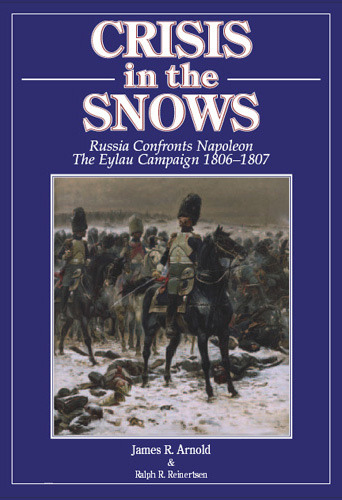
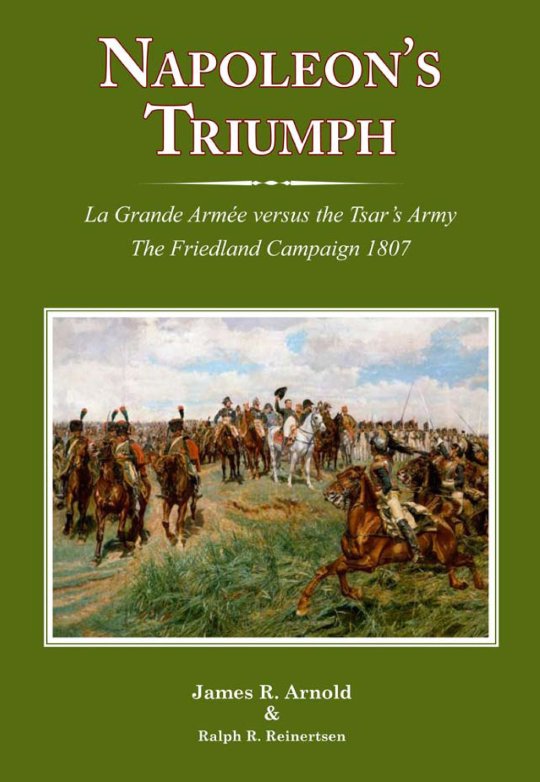
9. If you are interested more in the emperor’s later wars, there is a book of Francis Loraine Petre, on the topic of the autumn campaign of 1813, Napoleon’s last campaign in Germany:

(If you have recognized the image used as a cover of this book I would be delighted to discuss this picture with you ;))
10. And the last but not the least - a book about the Battle of Nations itself, Leipzig by Bruno Colson.
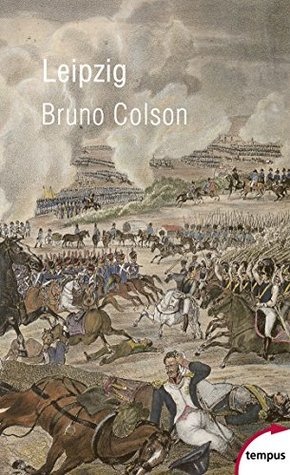
#books#napoleonic era#Napoleonic Wars#History Books#Jean Baptiste Vachée#Annemarie Selinko#memoires#Anna Potocka#Wirydianna Fiszerowa#Jean Tulard#Joseph Fouché#James R. Arnold#Ralph R. Reinertsen#Francis Loraine Petre#bruno colson#the battle of nations#the battle of leipzig
26 notes
·
View notes
Note
Hello, I've scrolled through your blog to make sure, this question wasn't asked before, but it would seem that it wasn't (though I could've missed it). Can I please ask you of prince Poniatowski's attitude towards Napoleon?
No, this question has not been asked yet, and thank you very much for sending it! It will be my please to write a answer to this.
Relationship between prince Józef Poniatowski and the emperor Napoleon Bonapart
I am sorry, this turned out to be a very long read, and on the topic a little bit wider than asked, so I had to specify the title and give the short answer for those who aren’t interested in details.
So in brief - Poniatowski respected Napoleon, but wasn’t a blind worshipper of the emperor. And in situations when in the balance there might have been Napoleon and Poland, and only one thing was to be chosen for prince Józef this one definitely would be his motherland.

Bronisław Gembarzewski, prince Józef and Napoleon
Emperor Napoleon, as all fans of the epoch knows, first arrived to Warsaw in December of 1806. But to start the long-read about relationship between the emperor and the prince properly we need make a step backwards, to understand what these two thought about each other on the moment of their first meeting.
Prince Józef, in comparison with many of his country men, participated in none of general Bonapart’s campaigns. What’s more - when the count of Provence, future king Louis XVIII resided in Warsaw in 1801-1804 he was an often visitor of Poniatowski’s palace. (So it may be said that before 1806 prince Józef was kind of a “royalist”.)
However, with Napoleon’s victory over Prussia and the emperor’s arrival to the former Polish lands chances of Poland rising from the dead skyrocketed! And prince Józef realized that he couldn’t have stayed away any longer, that if he wanted to participate in his motherland reappearing on the map of Europe he had to join the French.
As for Napoleon - in 1806 the emperor of Frenchmen didn’t have any warm feeling towards the nephew of the last king of Poland. One of the reason was that Claude Carloman de Rulhière, with whose book Histoire de l’anarchie de Pologne Napoleon had studied history of lands he was going conquer, wasn’t sympnathising the Poniatowski family. As other reasons there may be named a fact, that that time in French Army there were other Poles, whom the emperor knew better, like generals Jan Henryk Dąbrowski and Józef Zajączek.
Nevertheless, because when leaving Warsaw the Prussians kinda left the city “in charge” of Poniatowski, Napoleon had to meet prince Józef on entering the city. And from the data I was able to find it looks like the first meeting of the emperor and the prince happened on the 19th of December.

Prince Józef with Napoleon during the war campaign - drawing by Wacław Lipiński
With this image I am obliged to make a small digression. Napoleon, as recent investigation show, was not that short as he was thought to be because of English cartoons. Józef Poniatowski, on the other hand, was described by the contemporaries as a man of the middle height. So, in my opinion standing side-by-side these two must have looked like as people of the same height.
With the emperor so prejudiced against prince Józef, you may ask, how did it happen that less than a month later, on the 14th of January 1807, the latter was appointed as a Director of War? (In October of 1807, after the Duchy of Warsaw was created, Poniatowski’s post acquired the name of “Minister of War”.)
The answer is that behind the event there was a long and complicated intrigue, in which were involved such people as Joachim Murat (with whom, as you may remember, prince Józef quickly became friends) and Charles Maurice de Talleyrand, that time Foreign Minister of France. (As for the latter - his protection was asked by Pepi’s sister, Teresa Tyszkiewicz.)
And I can’t help but mention that Poniatowski’s nomination nevertheless had some advantages, because in comparison with his “rivals” he was a representative of the aristocracy, what might have provided support to Napoleon from the Polish high-society.
And speaking of high-society I can’t help touching a rather delicate topic, related with Napoleon’s love life, with which Poniatowski - in comparison with what is thought about him - had nothing to do. Yes, I mean the story of prince Józef (and other Polish dignitaries) supposedly forcing Maria Walewska to give in to the emperor in exchange for “Poland’s resurrection”.

SCREENSHOT FROM THE MOVIE “MARYSIA I NAPOLEON”. From left to right - Zdzisław Makłakiewicz as prince Józef, Gustaw Holoubek as Napoleon, Beata Tyszkiewicz as Maria Walewska, Ignacy Machowski as Duroc, Kazimierz Rudzki as Talleyrand, Juliusz Łuszczewski as Anastazy Walewski
Many people believe in it because it is written in so-called Walewska’s memoirs, but the investigations of Polish historians (like, fir example, Marian Brandys) prove that not everything might have happened like it was described in the memoirs. And prince Poniatowski’s involvement in the story is one of the facts. (The closest connection he might have had with this is that Mme Henriette de Vauban, his mistress, might have tried to influence Mme Walewska. But this is definitely a topic to continue in - if at all - a separate post.
So, let’s return to relationship between Poniatowski and Napoleon.
In 1809 the Duchy of Warsaw was attacked by the Austrians, and the Army of the Duchy showed its combat strength, winning the war and taking back from the enemy a huge a part of former Polish territories. The emperor was impressed by prince Józef’s inferiors’ performance, till such a degree that he awarded the latter with the highest imperial order of merit, the cross of the Legion of Honour.
But this was done “by proxy”, and the next, after year 1807, meeting of these two happened only in 1811 in Paris, where Poniatowski was invited to attend the christening of Napoleon’s son, the king of Rome.
Prince Józef arrived to Paris on the 23rd of April, and in the evening of that very day received an invitation from the emperor to appear next day in Saint Clou. What’s more, Poniatowski’s visit was to be happen at once, without an obliged advance as the ceremony of representation by the Saxon ambassador.

Prince Józef with Napoleon during the ceremonial audience at the Tuileries Palace - drawing by Maria Artwińska
And this is the image I like, because both - the prince and emperor - seem to have there the “correct” height!
Why was Napoleon so eager to see prince Józef? Well, at least because the latter brought with him news, which was dangerous to trust to paper. Namely - about planning Russian invasion of the Duchy and the tsar attempts to persuade the Polish Minister of War to switch sides and join the anti-napoleonic coalition. (Can’t help but mention there that Poniatowski revealed Napoleon mere facts, but not the names of the people communicating with him, in order not to put them in danger.)
And what about christening? Of course, prince Józef participated in the ceremony, and was even allowed to have an audience with the child-king. And, no doubts, there followed other court events, huntings, balls, etc. Old friend, Murat, and Poniatowski’s sister’s love interest, Talleyrand, introduced Pepi to the highest Parisian society. Also Pepi paid a visit to the ex-empress Josephine.

Prince Józef in conversation with Napoleon and the French Minister of Foreign Affairs, Talleyrand - drawing by Andrzej Zarzycki
And though initially prince Józef’s stay in the French capital was planned to be a couple of months, in fact it prolonged to four, till the emperor’s birthday. And leaving finally on the 27th of August Poniatowski received as a farewell gift a beautiful snuffbox planted with diamonds and a loan to… pay the debts of his sister Teresa.
And then there came the year 1812. Prince Józef was made the commander of the 5th Corps of the Grande Armée, and with the rest of the Army went to Russia.
However, above “The Polish corps” there was a commander not very competent and lucky, emperor’s younger brother Jérôme. And when it happened that the Russian Army under general Bagration managed to escape from the “second center” corps led by Jérôme, Napoleon blamed on this... prince Józef.
In the battle of Smolensk, however, the Vth Corps managed to distinguish to such a degree, that together with its commander it was mentioned in a bulletin of the Grande Armée.
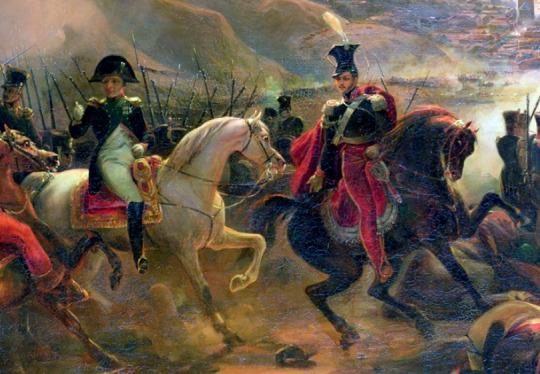
Jean-Charles Langlois, The Battle of Smolensk, 17th August 1812, detail
But after that battle there happened a very dramatic scene between the prince and the emperor. Because, as you might know, the city of Smolensk was the most eastern town ever belonged to Poland. So, if Napoleon’s goal was, as it had been proclaimed in the beginning of the war, to restore Poland, the Grande Armée should have stopped there, at Smolensk. Not to go further east.
And Poniatowski, as a witness of the scene, count Ostrowski, recalled, “begged Napoleon on his knees if not to direct the whole French Army to the south, to the former Polish lands, then at least to separated the Polish corps and send it along the Dnieper river, in the direction of Kiev...”
But emperor was implacable.
What happened next we all know. The battle of Moscow, fire, retreat…
In December Napoleon left his army and speeded to Paris. Prince Józef returned to Warsaw, to rebuild “the Polish corps”, to reenforce the people left with new conscripts and to be ready to join with these people the emperor. When the latter comes with fresh forces, to fight the coalition back.
But the emperor of French didn’t hurry to return to the East of Europe. Failing to wait him Poniatowski had to leave Warsaw, going with his soldiers to Kraków. And was waiting here, for almost three month.
To no avail.
At the beginning of May all the territory of the Duchy of Warsaw, except Kraków, was occupied by Russians. A lot of Polish officers, acquaintances and even friends of prince Józef, resigned from the army. A lot of them were persuading the Polish commander-in-chief to follow, to join the anti-napoleonic coalition.
And… well, here I can’t write that Poniatowski rejected these propositions, all and at once. No, he was listening, thinking over… Asking for terms and thoroughly pondering on what would have been better for his motherland - to stay with France or not.
And on the night from the 6th to the 7th of May, on the eve of his 50th birthday the decision was made.
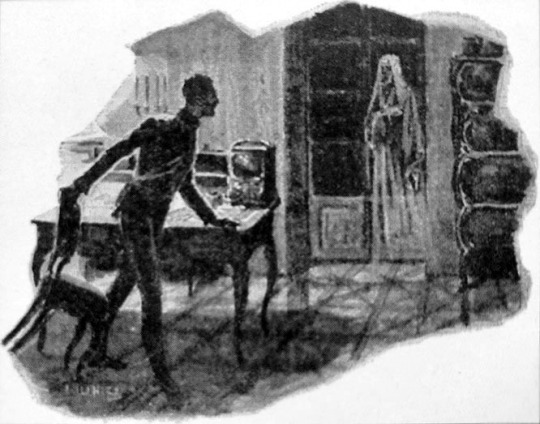
Prince Józef sees “the White Lady of the Poniatowski Family” on the night on 6/7 May 1813 in Krakow (drawing by Ludomir Ilinicz)
Having obtained no written guaranties from the other side, feeling that unconditional surrender - the only thing they were ready to accept from him - was not compatible with the soldier honor, the Polish Bayard decided to stay with Napoleon.
Although to make such a decision was for prince Józef extremely hard (especially if to take into account that he still had not got clear instructions from the emperor what to do). As Poniatowski confided next day to one of his colleagues that night thinking was so difficult to him that he even thought about shooting himself. Twice.
What is not proved - so this fact still stays a kind of legend - that that night prince Józef saw a ghost, the famous “White lady of Poniatowski family”. The fantom that was said to announce with its appearance very bad things to come…
And in 5 month there came… the battle of Leipzig.

Jean-Charles Langlois, The Battle of Leipzig (?)
This image is often signed as „the battle of Leipzig” though judging by the emperor’s, the prince’s and their horses’ poses I suppose it might be another version of “the battle of Smolensk”.
Of course, before Leipzig there was truce, then the battle of Dresden, then retreat and preparations. And in the beginning of the battle there was a moment when French victory still looked possible. But soon it turned out that it was an illusion.
And then the emperor… named general Poniatowski a marshal of France. Thus making him the only foreigner among that cream of French military elite.
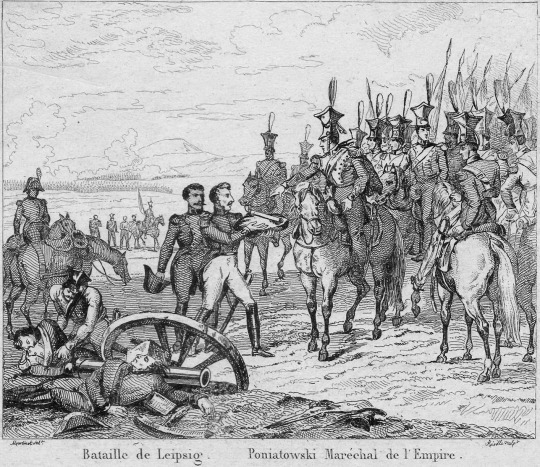
Prince Józef Poniatowski receives the marshal baton, French engraving from the XIXth century
How did Poniatowski react to such a promotion? Did he become happy? Or, at least, glad?
No, not at all. (It looks like he felt that this appointment has more with his future attachment to France, than with military achievements.)
So prince Józef continued to call himself a general, sign documents according his old position. Furthermore, in the written explanation that Poniatowski sent to Warsaw it was stated that “if there was not war for Poland, no one would ever see him in uniform”. Which literally meant resignation. (In the very same letter, though, prince Józef announced that before leaving the army he had to escort Napoleon back to Paris.)
So, dear friends, who was interested in what might have happened with prince Józef had he not been killed at Leipzig - this is the answer. He would definitely retreat with Napoleon to Paris, than resigned and… here the certainty is a little bit less, but something tells me that he would have preferred exile to going back home. But I am not one hundred percent sure.
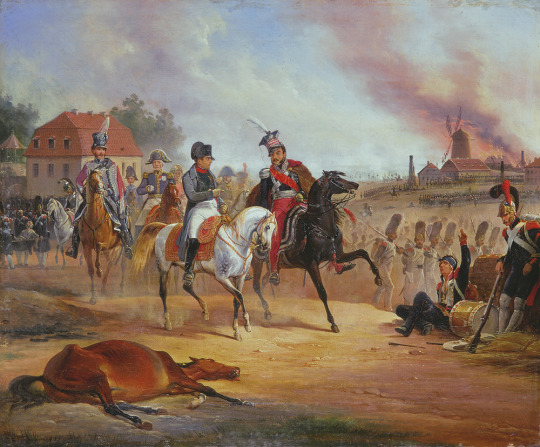
January Suchodolski, Napoleon and Józef Antoni Poniatowski at the Battle of Leipzig
And what about Napoleon? In his memories dictated on St. Helene he wrote that he should have made prince Józef the king of Poland (ha-ha, what would he have done if the latter rejected the crown?), regretted not doing this.
But what is, in my opinion, more interesting, is to learn what the ex-emperor thought on other Poniatowski-related topics? Did he regret blaming prince Józef for Jerome’s mistakes? Had he doubts on not listening the Polish commander’s pleas to take back former Polish land instead of going to Moscow?
Alas, I am afraid, this is a thing we’ll never know…
#józef poniatowski#napoleon#poniatowski#poniatowski and napoleon#charles maurice de talleyrand périgord
57 notes
·
View notes
Text
Some books about Napoleonic era...
... and not only it
And now, my dear friends, let me share with you a little bit about the books about Napoleonic era I read recently (and long ago as well ;) Because, you know, thanks to you I discovered a lot of interesting books and articles, so I feel obliged to do something for you in return.
And though almost all I read is in Polish, I was able to collect a set of books which are available in English (or French).
So, let’s go!
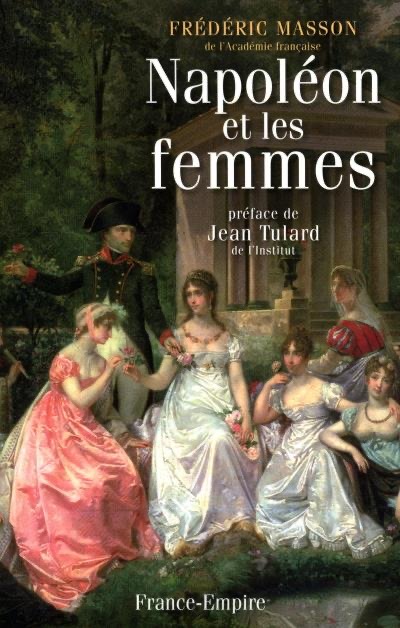
1. The book I would like to start with is “Napoleon and the women” written by Frédéric Masson. Frankly speaking, I read this one long long ago, just - as far as I remember - after watching “Napoleon and Josephine” TV series. And now, having stumbled upon another Masson’s book (see below) I suddenly recalled this one. (And decided to start with it, because it was in kinda first one of the publications which introduced me into that epoch ))).
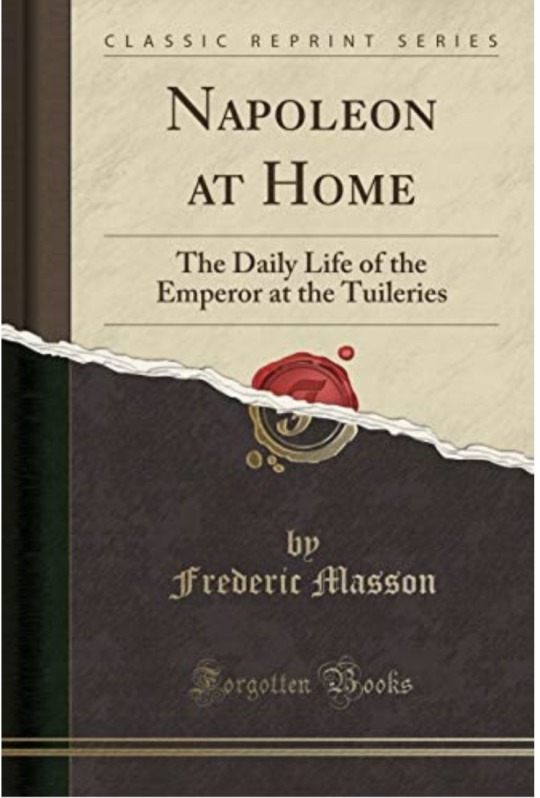
2. The second book (the very same I have finished reading just this month) of Masson I would like to recommend you is Napoleon at home. Really interesting book, with a lot of details about the emperor’s usual life, thanks to which I was able to look at him and see not only as a military commander and the head of the state, but a human being also.
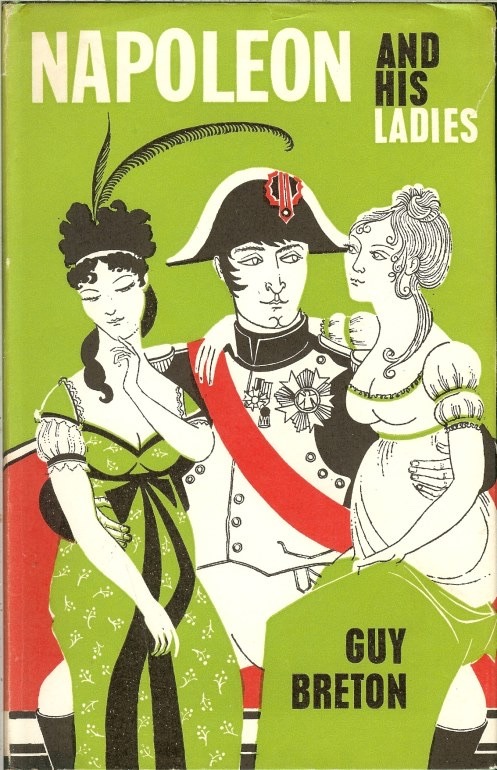
3. Continuing the topic of Napoleon’s private life - there is a book from Guy Breton’s series Histoires d'amour de l'histoire de France, devoted to it (in fact, there are even two books there, the second one is called Napoleon and Marie-Louise).
Btw, I read all the books from the series and, frankly speaking, some of them looked rather like collections of anecdotes. But, nevertheless, it was kinda fun to read them.

4. Daily life in France under Napoleon by Jean Robiquet. Just one of the books I read recently. But it was about our favorite epoch (and it was in English), so...
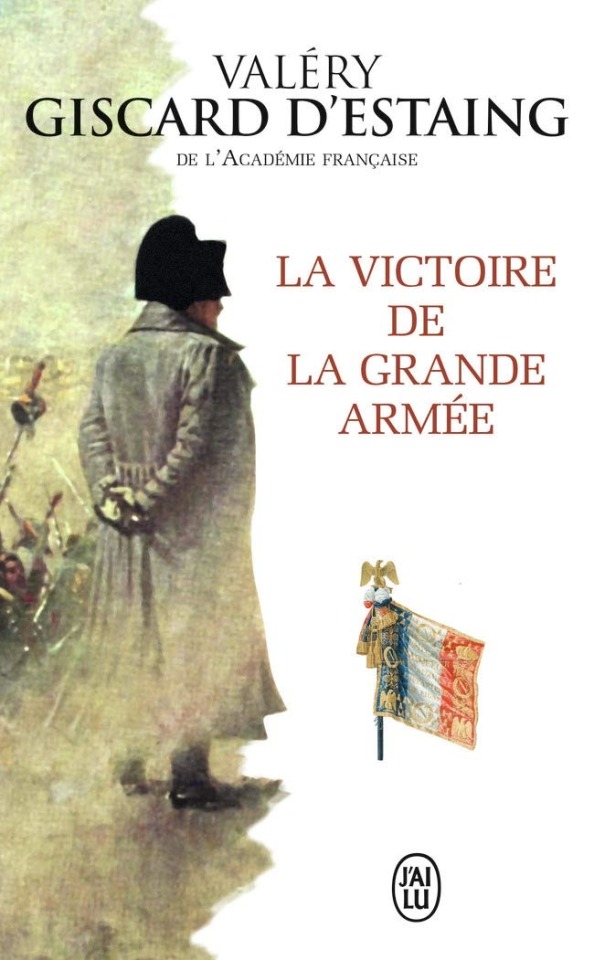
5. La Victoire de la Grande Armée (the English title approximately should sound like “The victory of the Grand Army”, but I am not sure whether it was translated to it, I read it in Polish) by Valéry Giscard d'Estaing. Well, this will be the only fiction in this list of mine. And the only book about which I can’t much good, but... Yes, there are a lot of historical discrepancies there (like Poniatowski and Grouchy being marshals already in 1812, and prince Józef’s second name as Aleksander instead of Antoni), and the protagonist ( a general named François Beille) is a complete Marty-Stew, but... But to have a “universe” where Napoleon wins in 1812 and Poniatowski isn’t killed, even it is fiction - this meant a lot to me.
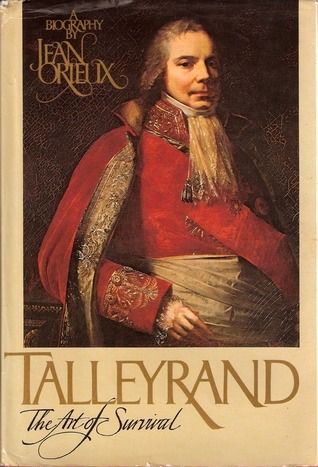
6. From Napoleon let’s move to Talleyrand. The latest biography of him I read was Talleyrand. The Art of Survival by Jean Orieux. And, frankly speaking, it was the best from all I read about prince of Benevento. Some of the rest book about him, however, were in English, so for those who are interested, I am giving below their titles:
Joseph McCabe, Talleyrand: A biographical Study
David Lawday, Napoleon's Master, A Life of Prince Talleyrand
Duff Cooper, Talleyrand
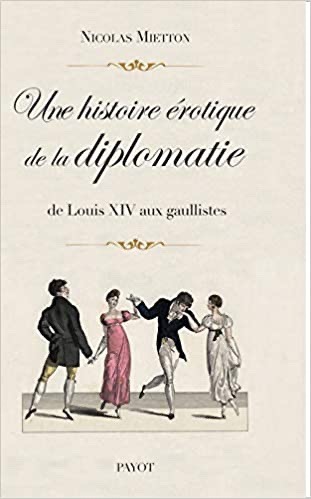
7. And from one of the famous diplomats of the French history let’s move to the history of diplomacy itself. A couple of years ago I read (in Polish) the book written by Nicolas Mietton on the topic of “Erotic history of the French diplomacy”. Not that there was much about Napoleon (though there was a chapter devoted to Talleyrand), but some facts about Louis the XVI were kinda revelation for me.
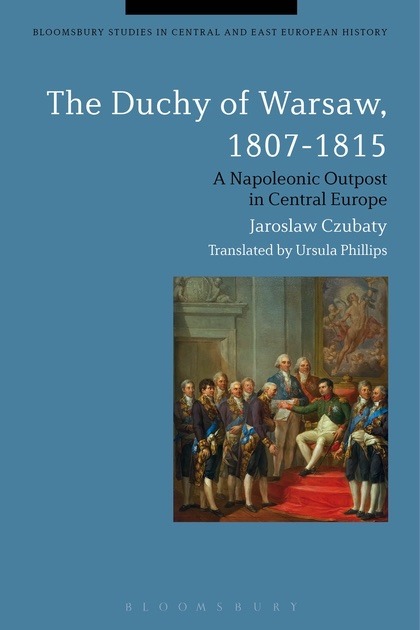
8. From the books about France let’s move to ones about Poland. This one, on the topic of The Duchy of Warsaw, written by professor Jarosław Czubaty, was initially published, as you might have guessed, in Polish. But it later was translate to English, and that is why I am able now to sincerely recommend it to you. (@historyman101 , might it be of your interest?)
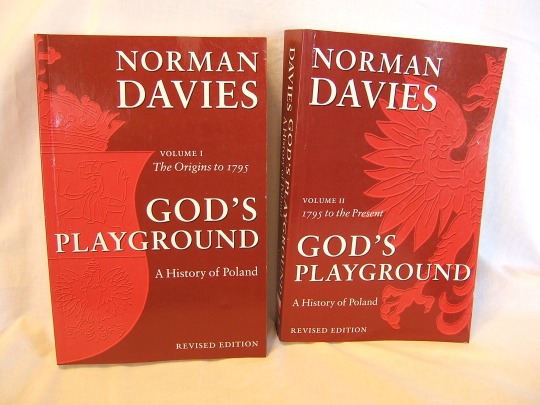
9. And the last but not the least is the book about the Polish history in whole. Its name is God’s Playground (”Boże igrzysko” in Polish), and it is also available in English, because Norman Davies, its author, is British (and a great polonophile ;))
PS. O, how could I forget this?
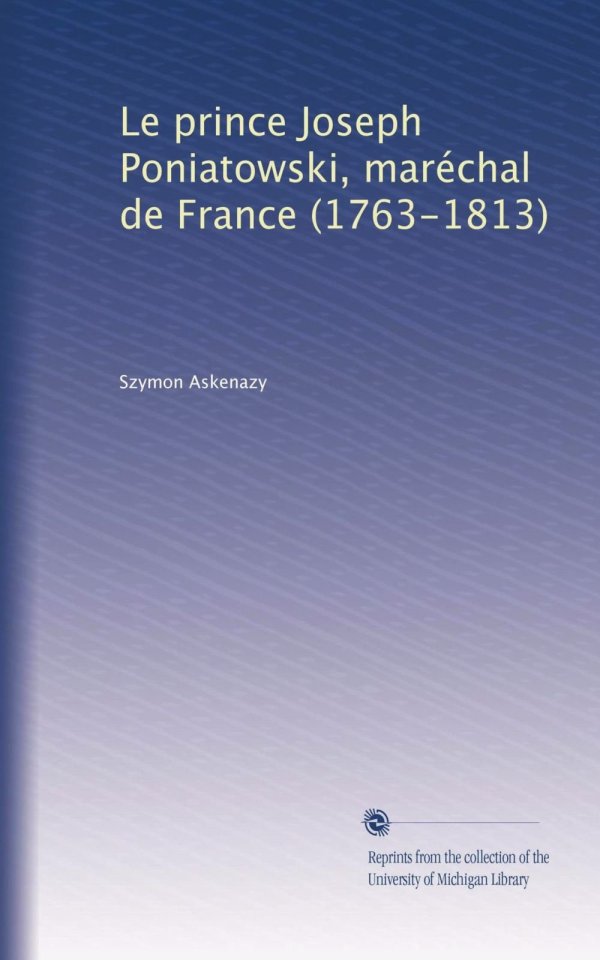
10. Prince Józef Poniatowski, Pepi’s biography written by Szymon Askenazy, one of the famous Polish historians of Napoleonic era, was also translated to French, English and even German.
#józef poniatowski#books#history books#napoleonic era#the duchy of warsaw#napoleon#frederic masson#guy breton#france#alternative history#charles maurice de talleyrand périgord#La Victoire de la Grande Armée#nicolas mietton#jarosław czubaty#szymon askenazy#norman davies#god’s playground#Jean Orieux#Valéry Giscard d'Estaing#Jean Robiquet
41 notes
·
View notes
Text
Prince Józef’s “frenemies”
Good day, dear friends, and let the topic of this week’s post be Józef Poniatowski’s “frenemies“ (or, in longer words, people from Poland and France - fellow countrymen and representatives of allies - with whom prince Józef wasn’t in good terms).
Yes, as any other man Poniatowski didn’t have good relations with each and every person. In his youth, for example, he was dislike by some people for the gallant lifestyle; in times when Warsaw used to be a Prussian provincial city Poniatowski and his close circle were criticized for preferring the French Theater to the one, where performances were played in Polish.
(Maybe be one day I’ll write more on the topic, but because most of you are interested more in Napoleonic epoch, let’s start today from people and events related to the Duchy of Warsaw).
So, the first conflict happened already in January 1807, when prince Józef was chosen over generals Dąbrowski and Zajączek to become the Director of War (in October of 1807 the position was renamed to the “Minister of War”) of the Duchy. And, if to have a look to biographies of both of them we’ll see that each had enough reasons to expect that the position would become his.
Jan Henryk Dąbrowski
Let us start with Jan Henryk Dąbrowski.

Unidentified Polish painter, Portrait of Jan Henryk Dąbrowski, 19th century
He was 8 years older (born in 1755) than Poniatowski. And, same as prince Józef, Jan Henryk grew up not in Poland, but in a German speaking country. In Dąbrowski’s case it was Saxony, where his father served in the Saxon Army. And Jan Henryk himself started his military career there.
In the beginning of 1790ies, however, Dąbrowski followed the appeal of Great Sejm and returned to his motherland, where participated both in Polish-Russian War of 1792 and the Kościuszko Uprising.
After the Third Partition of Poland general Dąbrowski turned his attention to France - the country which, having abolished its monarchy, was seen by many Poles as the only country who might have helped them. And there, indeed, with support of Napoleon Bonaparte, the Polish Legions were created.
Of course, Dąbrowski commanded only one of the Legions (among other commanders there were, for example, Karol Kniaziewicz and Józef Wybicki), but it was his name which was mentioned in the Legions’ anthem. So, when the Legions, where many a Poles joined hoping this would have brought freedom to their country, in 1806 finally entered the former Polish territory, it was more than expected that just general Dąbrowski would be made the head of the army of the future Polish country.
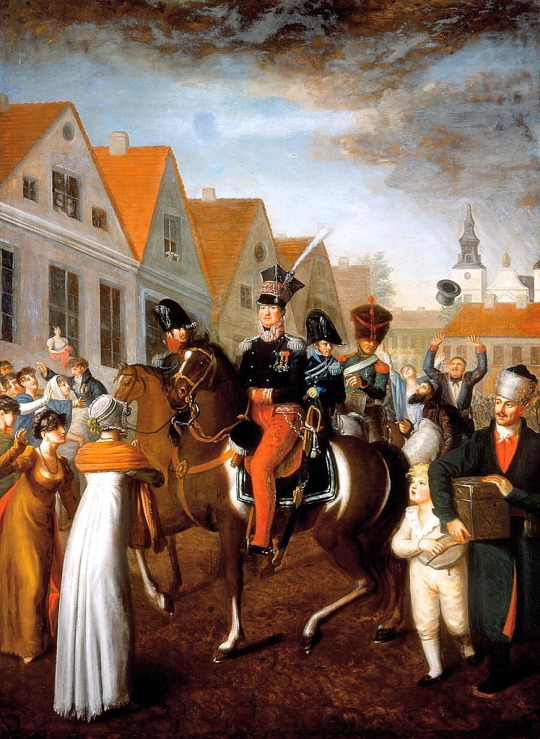
Jan Gładysz, Jan Henryk Dąbrowski's entry to Poznań, ci. 1809
But the choice, as we all know, was made for Poniatowski. (So, as you can see, Jan Henryk Dąbrowski' had enough reasons to have a grudge against prince Józef.) But I can’t help mentioning that when the situation was really serious, like in 1809 or 1812-13, both generals Dąbrowski and Poniatowski were able to forget their disagreements and to join their efforts in serving their motherland together.
Btw, there is one more thing (though a totally speculative one) I feel I must write about Dąbrowski.
As I wrote above, he participated in Napoleon’s German campaign of 1813, and in the battle of Leipzig itself. Furthermore, there, in Leipzig, there was present his second wife, Barbara, who, btw, was more than 25 years younger than Jan Henryk. (They married in 1807.)
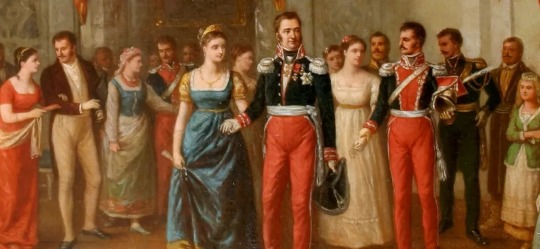
Feliks Sypniewski, The wedding of Jan Henryk Dąbrowski and Barbara Chłapowska (fragment), 19th century
So, if imagine, for a moment, that not but Poniatowski but Dąbrowski would have been killed at Leipzig... and taking into account all the above-mentioned romantic background (and the fact that the Legions’ anthem is now the anthem of Poland)... who knows, a monument to whom would have stayed now in front of the Presidential Palace in Warsaw.
But history, as we know, knows no ‘what if’s. So let me finish this part with a shrt description of general Dąbrowski‘s later years. Becoming the commander in chief of the all remaining Polish forces soon after prince Józef’s death he followed Napoleon to Paris, but in 1815, after creation the Kingdom of Poland as a Russian satellite state offered his services to this new power. The proposition to become the Viceroy (Namestnik) of the Kingdom of Poland was made for him, but Dąbrowski declined it. At the end of 1815 he retired from military service, and three years later died in his estate in the lands which that time belonged to Prussia.
That was all about Jan Henryk Dąbrowski, and now let us switch to the person who did accept the proposition of becoming the Namestnik and who also was prince Poniatowski’s frenemy.
So, please meet the general Józef Zajączek.
Józef Zajączek

Anonymous painter, portrait of a general Józef Zajączek, 19th century
Being born in 1752 Zajączek was older even than Dąbrowski. And before 1792, when during the Polish-Russian war his path crossed with the one of prince Józef, Zajączek had a kind of military and diplomatic career behind him. He visited Paris and Istanbul as a member of Polish diplomatic missions. He fought in the War of the Bar Confederation, and for some time served in French Army. And though he supported the newly accepted constitution in 1791, he didn’t like the king Stanisław August himself.
And it looks like that from that antipathy towards Poniatowski-king Zajączek’s dislike for his namesake for Poniatowski-prince grew from.
But, apart from this, in 1792 there happened a real conflict between two Józefs (and not without “participation” of Stanisław August). Because when in summer of that year the Polish king, having decided that there was no more sense in fighting Russians, ordered his troops to capitulate, the Polish military chiefs weren’t ready to accept such a command at once (because after weeks of retreat the Polish Army that time finally began to overcome the Russians).

Access of Stanisław August Poniatowski in to Targowicka confederation July 24 1792
So, not wanting to surrender, some high officers decided they should go to Warsaw, kidnap the king and force him to cancel the shameful order. Józef Zajączek was among them. Józef Poniatowski was totally against it.
And though the kidnapping didn’t occur, two Józef’s animosity was flared up.
Like Poniatowski, general Zajączek participated in Kościuszko’s uprising in 1794. And like Kościuszko himself, he was captured. But caught he was by Austrians, and after a year only in prison - released.
Then Zajączek went to France, where he joined the French Army, in 1797 Napoleon recognized him as an active general in the French Service (Zajączek didn’t join the Legions, because many a Poles from there remembered him from the times of 1794 Uprising and blamed for the massacres the Russian troops did in Warsaw’s suburb named Praga).
So Zajączek served in French Army as a French general, participated in Napoleon’s Egyptian expedition, then in the War of the Third Coalition in 1805.

André Dutertre, portrait of a general Józef Zajączek during the Egyptian campaign, between 1798 and 1801
Next year, 1806, in the War of the Fourth Coalition, he was assigned to command one of the Legions entering former Polish territory, and then to create another legion from the Poles already there. So not surprisingly he as well expected to become the Director of War (the position was later renamed to “Minister“) of the newly created Duchy of Warsaw.
And when his longtime foe Józef Poniatowski got the position Zajączek was more than dissatisfied. He refused to obey Poniatowski’s orders, and wrote in answer:
I am a French officer, I have command over the Poles, because this is what the emperor wanted, I do not depend on you at all... I expect nothing from the Polish government, I owe everything to the French Emperor... I warn you once and for all that I do not want to have anything more with you to do...
However, like Dąbrowski, in 1809 and 1812 Zajączek had to subdue ambitions and cooperate with Poniatowski. But, in comparison with the former, Zajączek didn’t participate in 1813 campagne. Because was wounded in the battle of Berezina in November 1812 (Dominique Larrey had to amputate his leg) and then captured by Russians.

Fording the Berezina River by January Suchodolski, ca. 1859
What happened next? After being almost 2 years in prison Zajączek return to Poland, and in 1815 tsar Aleksander, crowned as a new Polish King, proposed him the post of the Viceroy. Which position the namesake of prince Józef hold more than 10 years, till his death in 1826. In 1818 he even got a title of prince from the tsar, so since that time he might also be called “prince Józef”.
Ok, and what about Zajączek’s private life? You’ll be surprised, but in this area there were some similarities between him and Józef Poniatowski. Because first Józef’s sweetheart, Aleksandra Pernet, was of a French origin (though she was born in Poland). And married when they met. But that’s all, because, in comparison with Henriette de Vauban Aleksandra was 2 years younger than her Józef. And, what’s more, Zajączek was able to help divorce her husband, and in 1786 these two were able to marry.

Louis-François Marteau, Portrait of Aleksandra Pernett, ci. 1780
And - can’t help but mention, Zajączek’s wife was known for her beauty, which she was able to keep till the very old age.
And we’ll move now to the next person, whom prince Józef was in bad terms with. Namely - general Michał Sokolnicki.
Michał Sokolnicki
And, in comparison with Dąbrowski and Zajączek, Poniatowski and Sokolnicki’s conflict happened quite late, in 1809.
Being almost a peer of prince Józef (born in 1760), Michał Sokolnicki participated both in Russian-Polish war, and in Kościuszko Uprising, was a member of the Polish legions, and transferred to the Army of the Duchy of Warsaw in 1807.

Jan Gładysz, portrait of a general Michał Sokolnicki, 1815
The problems started, as I mentioned before, during the Polish Austrian War of 1809. Because Sokolnicki, who participated in battles of Raszyn, Grochów, Góra Kalwaria and Sandomierz, and was decorated with the Polish Order Virtuti Military and the French Legion of Honour, still felt he was underestimated.
So in 1810 he asked for a leave - saying he needed to fix his health - and went to Paris. And when Sokolnicki didn’t return to Poland in time prince Józef had to remove him from the active service (in December 1811). Full of resent, Sokolnicki then joined the French service and, staying by Napoleon's side, intrigued against Poniatowski.
And it is highly probable that due Sokolnicki’s effort prince Poniatowski, in 1812, acquired the next (this time a French one) “enemy”.
And this “frenemy” was none other than... the Emperor’s own brother, Jérôme Bonaparte.
Jérôme Bonaparte
The youngest Napoleon’s brother (born in 1784) belonged rather not to prince Józef’s generation, but to the next one. And definitely wasn’t so military talented as the Emperor himself. And preferred luxury life style even on march, in the campain of 1812, when every minute and hour was crucial.

Sophie Lienard, portrait of Jérôme Bonaparte
So no wonder that part of the Grand Armeé Jérôme commanded allowed Russian troops to leave unscathed. But the responsibility for this, not without assistance of the above mentioned general Sokolnicki, was shifted to the shoulders of... prince Józef. (Why Sokolnicki needed this - well, it is highly probable he counted on Poniatowski’s dismission which would have made prince Józef’s position opened to Sokolnicki himself) And Napoleon - as diarists recall - did not accept any excuses and subjected prince Joseph's to very harsh criticism. Which, in turn, might have been the reason why Napoleon didn’t listen to Poniatowski after the battle of Smolensk, when the latter pleaded the emperor to turn the army south instead of going east.
But this is another speculation.
What I am pretty sure - though I have to admit I never read direct mentions about it - is that after such a military failure (and following tongue-lashing) Józef Poniatowski and Jérôme Bonaparte could not have been in good terms anymore.
That’s all for today, thanks for reading!
#Poniatowski#Jozef Poniatowski#Napoleon Bonaparte#Napoleonic Wars#dąbrowski#Jan Henryk Dąbrowski#Józef Zajączek#Michał Sokolnicki#jérôme bonaparte
22 notes
·
View notes
Text
Józef Poniatowski’s depiction in movies
Part I. Films not related to Napoleon-Walewska story
Good day to you all, dear friends, and let me (while I am on vacation) pick as the topic of this week’s post not very serious one. Namely - to show you actors who played prince Poniatowski in movies.
About half of the movies where prince Józef appears are, however, dedicated to Napoleon’s love affair with Maria Walewska - to them I dedicated the next post. Today let us look to another half.
1. The first movie in my list will be a Polish movie from 1937 named „Ułan księcia Józefa” („The Uhlan of Prince Joseph”), also known as “Dziewczyna i ułan” (“The girl and the uhlan”).
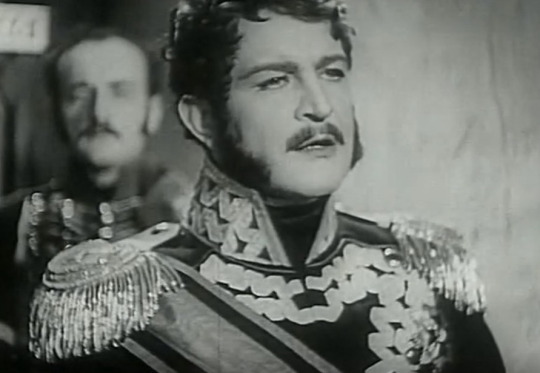
Franciszek Brodniewicz as prince Józef in The Uhlan of prince Józef
And, frankly speaking, this is my favorite movie from those where Pepi appears. Why? At least because it’s not about the war, it’s about love (though the girl here chooses the uhlan over prince Józef).
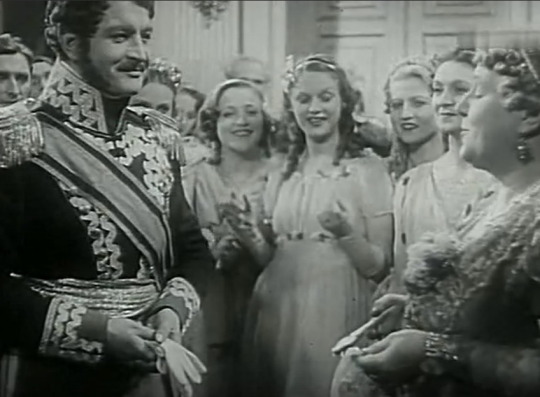
Prince Józef at the ball, with ladies
And also I liked very much how Franciszek Brodniewicz played Pepi. (And can’t understand, at all, how the heroine could give her heart to an uhlan, when Poniatowski was courting her)))
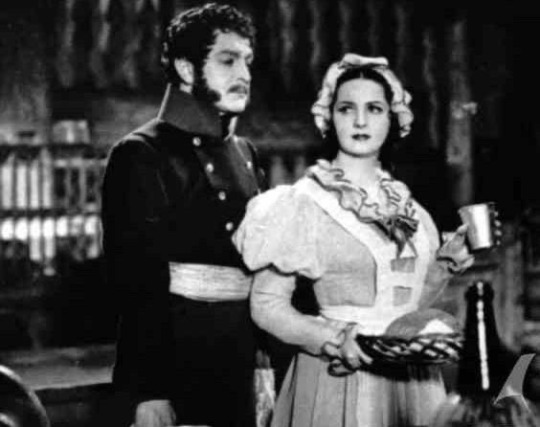
Franciszek Brodniewicz with Jadwiga Smosarska, who played the main heroine, Kasia.
For those who became interested in this film I am giving the link on Youtube (but it is in Polish and doesn’t have any subtitles, sorry).
2. The second from my list of non “Napoleon-Walewska”-related movies will be “Popioły” („The Ashes”) - Andrzej Wajda’s adaptation of Stefan Żeromski’s novel of the the same title. And though prince Józef was a minor of the book he appeared in movie, played by Stanisław Zaczyk.
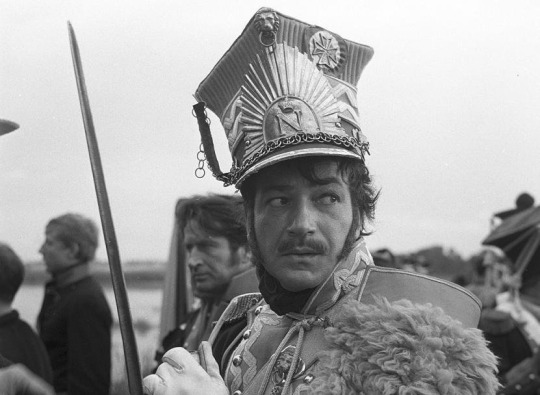
Prince Józef during the battle of Raszyn
What’s interesting is that 12 years after “The Ashes” were filmed Stanisław Zaczyk played Poniatowski one more time, that time in a docudrama “Raszyn. 1809” devoted to the battle itself. (Alas, I was able neither to watch this movie, nor to find any screen from it.)
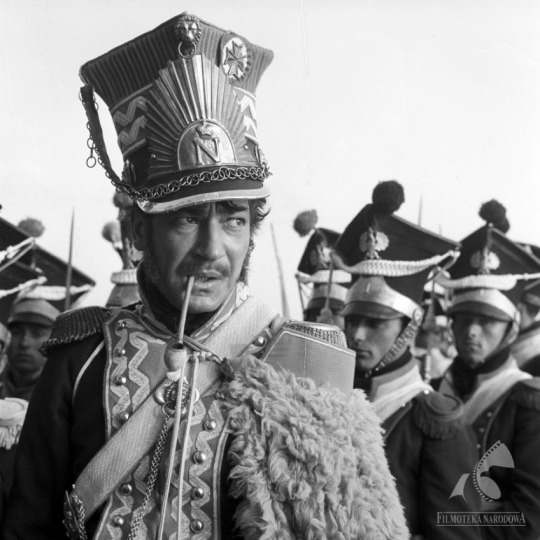
Stanisław Zaczyk as prince Józef in “The Ashes”
However, what is also interesting about the movie is that there we can see a “casual” Pepi - receiving visitors in a dressing gown:
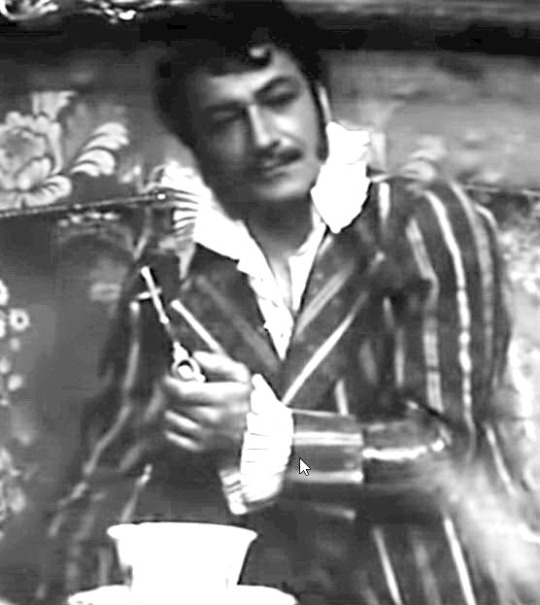
Screenshot from The Ashes
And for those, who are interested, there links to this film on TouTube:
Part I, Part II, Part III (in Polish, without subtitles again, sorry…)
3. The next position from my list is more actor’s choice, than the movie. But nevertheless, though the film under the name „Książę Józef Poniatowski” where the actor played Pepi did not survive, there are photos of the actor in make-up, so please meet Józef Węgrzyn as Józef Poniatowski:
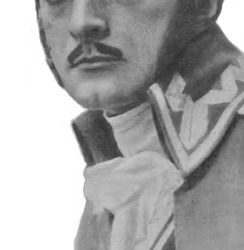
(But, I have to admit, I am not sure whether this is a photo from the film, or from the play of the same title which was written and staged in 1917, just a year before the film)
Nor I know the plot of the movie. But, judging by the fact that its director had the same surname as the play’s author (a brother?) is might have been an adaptation of the play.
And this is definitely a photo from the play (because it’s from a book with it):
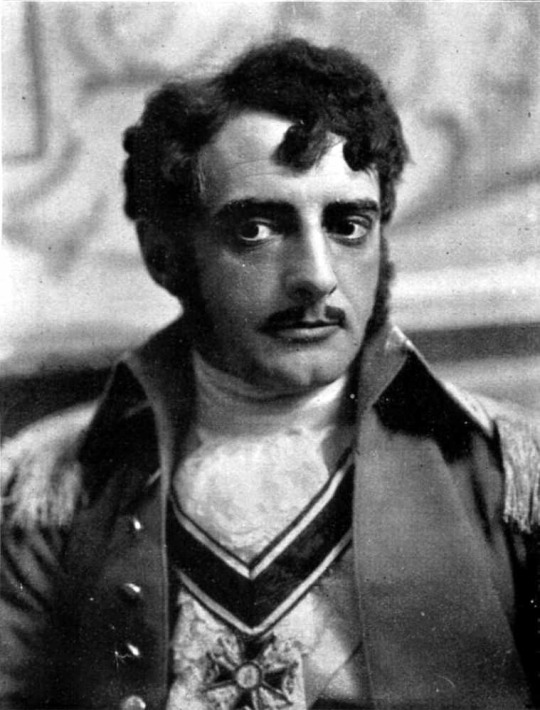
4. To finish this part I would also like with an actor. Who played… an actor playing prince Józef.
So please meet Marek Kondrat as “actor Marek playing Józef Poniatowski” in Juliusz Machulski’s film “V.I.P.”:

And one more screenshot, showing the “filming scene”:
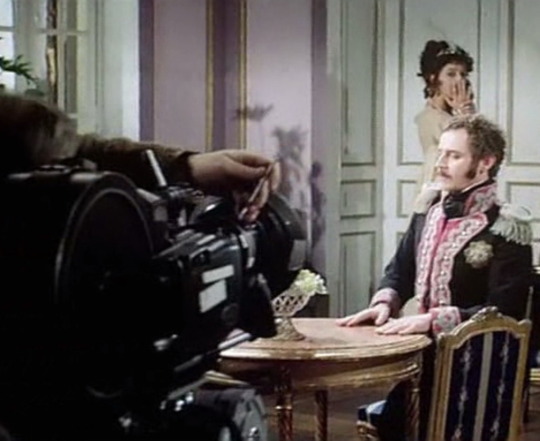
The whole movie (in Polish) can be watched on YouTube, here (the time is set approximately to the beginning of the scene).
#józef poniatowski#poniatowski#józef poniatowski in cinema#ułan księcia józefa#franciszek brodniewicz#popioły#stanisław zaczyk#książę józef poniatowski#józef węgrzyn#v.i.p.#marek kondrat
36 notes
·
View notes
Text
Contents of my blog (mainly devoted to prince Józef Poniatowski)
Some posts are re-blogs of my friends’ ones, for them the authors are given in brackets.

(The images added just to draw attention)
Portraits:
On paintings as a child
Painted during his lifetime
The most known posthumous (and its copies)
Other posthumous portraits
19th century “Photoshops”
Sculptures
Not looking like himself:
Engravings etc
With blue eyes
Family album:
Parents and sister
Grandparents, uncles and cousins
Some maternal relatives
Photoshops:
Napoleonic Christmas
Ofelia (by duc_du_orleans from Insta)
Riding naked on the streets of Warsaw
Women trying to seduce him
Relationships:
With women:
Karolina von Thun, Zelia Sitańska, Henriette de Vauban and Zofia Czosnoswka (first love, two mothers of his two sons and a French mistress older than him)
Julia Potocka, Rozalia Lubomirska, Barbara Kossowska (three ladies who tried to seduce him)
Princess Augusta of Saxony (a would-be bride that didn’t happen)
Pauline Bonaparte, Maria of Württemberg, Zofia Zamoyska (women with whom he might have had a kind of “romance”)
Queen Louise of Prussia, Anetka Potocka and the rest (of the names ever mentioned)
Why Poniatowski never married
Poniatowski’s children and descendants
With men:
Napoleon
Murat
Davout (a post of @histoireettralala)
Ligne, Schwarzenberg, Sanguszko, Linowski, Szumlański, Fiszer, Morand, Bignon (pals and comrades)
The Czartoryski family, Talleyrand
Dąbrowski, Zajączek, Sokolnicki, Jérôme Bonaparte (“frenemies”)
Prince Józef’s strong and weak points, quotes etc (a little bit about his personality)
His attitude towards becoming a king
A little bit on the topic of prince Józef’s height
Poniatowski’s favorite horse
Life events:
Place of birth, Vienna
Šabac, 1788
Zieleńce, 1792
Raszyn, 1809
Galician campaign, 1809
Narrow escape from the British Navy when visiting Gdańsk, 1810
Smolensk, 1812
———
Prince Józef’s last year:
Crossing the Berezina river, November 1812
Soldiers’ visit to the Copper-roofed palace, December 1812
Leaving Warsaw for good, February 1813
In Kraków, March-April-beginning of May 1813
Last evening in Kraków, May 1813
Entering Saxony, June 1813
Last summer and September, 1813
The battle of Leipzig, 16th-19th of October, 1813
———
Prince Poniatowski’s death in art
———
How Prince Józef’s body was found, 24th of October, 1813
Literature:
Fiction:
A manga by Riyoko Ikeda (a post by @tairin)
Poetry:
Poetry on the topic of his death
A short story on the topic about events behind his death (mine)
Depiction in movies and on stage:
“The uhlan of prince Joseph”, “The Ashes”, “Prince Józef Poniatowski” and “V.I.P”
Napoleon-Walewska related movies
“The Polish Thermopylae“ (a play)
Documentary videos on YouTube
——————————————————————
Books, magazines and other stuff related to Napoleonic era:
Magazines and some books
Books 1
Books 2
Books 3
Napoleonic era fiction
35 notes
·
View notes